Author Biographies 10
 Mildmay Fane (2nd Earl of Westmorland)
Mildmay Fane (2nd Earl of Westmorland)
1600-1666
Mildmay Fane was born around 1600, probably in Kent, to Francis Fane, 1st Earl of Westmorland, and his wife Lady Mary Mildmay, daughter of Queen Elizabeth’s Treasurer. From around 1615 until 1617, Fane attended Emmanuel College, Cambridge, which had been founded by his grandfather, Sir Walter Mildmay. Fane served as MP for Peterborough (1620-21;1626-28) and for Kent (1625) and was created a Knight of the Bath at the time of the coronation of Charles I.
Fane’s best-known work is a collection of poems, Otia sacra (1648), but Fane was also a skilled translator of the Roman epigrammist Martial and wrote, for private performance in his private theatre at Apethorpe, Northamptonshire, a masque, Candia restaurata, for which he even designed the sets and special-effects machinery, as well as writing the text and composing some of the music.
Much of Fane’s poetry survived but still remains unpublished, although he is being increasingly anthologized. In addition to his “retirement” poems, Fane also included poetry addressed to various members of the royal family, hoping that they could reverse their political fortunes and re-establish England as a kind of Arcadia. Fane makes a royalist icon of the young Prince of Wales (later King Charles II) as the symbol for a rebirth.
Fane was appointed Lord Lieutenant of Northamptonshire at the Restoration and died on February 12, 1666.
Source: http://www.luminarium.org/sevenlit/fane/fanebio.htm
 Bibliography
Bibliography
Press your browser’s BACK button to return to the previous page.
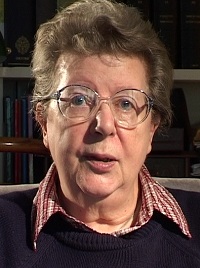 U.A. Fanthorpe
U.A. Fanthorpe
1929-2009
U.A. Fanthorpe was born in Kent in 1929 and attended St Anne’s College, Oxford (1949-53), and the University of London Institute of Education (1953-54), afterward becoming an assistant English teacher, and later Head of English, at Cheltenham Ladies’ College (1962-70). In 1971, she took a diploma in school counseling at University College, Swansea, and later worked as a hospital clerk in Bristol. This latter experience provided the backdrop for her first collection, Side Effects (1978), which records the invisible lives and voices of psychiatric patients.
Fanthorpe was Arts Council Writing Fellow at St. Martin’s College, Lancaster (1983-85), and Northern Arts Literary Fellow at the universities of Newcastle and Durham (1987-8). She became Fellow of the Royal Society of Literature in 1988 and held honorary doctorates from the University of West England and the University of Gloucestershire. She was awarded Hawthornden Fellowships between 1987 and 1997. In 1989, she became a full-time writer and often gave readings of her work, mostly in the UK and occasionally abroad. Many of her poems are for two voices and, in her readings, the other voice was taken by R.V. Bailey.
The first woman to be nominated for the post of Oxford Professor of Poetry, Fanthorpe was also short-listed for the 1996 Forward Poetry Prize (Best Poetry Collection of the Year) for “Safe as Houses” and was a leading contender for the post of Poet Laureate in 1999. Consequences (2000) was a Poetry Book Society recommendation; Christmas Poems (2002) brings together a collection of poems that she sent out to friends as Christmas cards from 1974 onward. Her last collection was Queuing for the Sun (2003) and her Collected Poems was published in 2004. Homing In: Selected Local Poems (2006) celebrates her home county of Gloucestershire.
In 2001 Fanthorpe was made CBE for services to poetry. She was also awarded the 2003 Queen’s Gold Medal for Poetry.
U.A Fanthorpe died in April 2009.
Source: http://www.contemporarywriters.com/authors/?p=auth180
 Bibliography
Bibliography
Press your browser’s BACK button to return to the previous page.
 James T. Farrell
James T. Farrell
1904-1979
James Thomas Farrell (February 27, 1904-August 22, 1979) was an American novelist. One of his most famous works was the Studs Lonigan trilogy, which was made into a film in 1960 and into a television miniseries in 1979. The trilogy was voted No. 29 on the Modern Library’s list of the 100 best novels of the 20th century.
Farrell was born in Chicago, Illinois, to a large Irish-American family that included siblings Earl, Joseph, Helen, John and Mary. In addition, there were several other siblings who died in childbirth, as well as one who died from the influenza epidemic in 1917. Farrell attended Mt. Carmel High School, then known as St. Cyril, with future Egyptologist Richard Anthony Parker. He later attended the University of Chicago. He began writing when he was 21 years old. A novelist, journalist and short story writer known for his realistic portraits of the working class South Side Irish, especially in the novels about the character Studs Lonigan, Farrell based his writing on his own experiences.
Farrell was also active in Trotskyist politics and joined the Socialist Workers Party (SWP). He came to agree with Albert Goldman and Felix Morrows’ criticism of the SWP and Fourth International leaderships. With Goldman, he left the group in 1946 to join the Workers’ Party.
Within the Workers’ Party, Goldman and Farrell worked closely. In 1948, they developed criticisms of its policies, claiming that the party should support the Marshall Plan and also Norman Thomas’ presidential candidacy. Having come to believe that only capitalism could defeat Stalinism, they left to join the Socialist Party of America. In the late 1960s, disenchanted with the political “center,” while impressed with the SWP’s involvement in the Civil Rights and US anti-Vietnam War movements, he re-established contact with his former comrades of two decades earlier. Farrell attended one or more SWP-sponsored Militant Forum events (probably in NYC), but never rejoined the Trotskyist movement.
Source: http://en.wikipedia.org/wiki/James_T._Farrell
 Bibliography
Bibliography
Press your browser’s BACK button to return to the previous page.
 William Faulkner
William Faulkner
1897-1962
William Cuthbert Faulkner (born Falkner, September 25, 1897-July 6, 1962) was an American writer and Nobel Prize laureate from Oxford, Mississippi. Faulkner worked in a variety of media; he wrote novels, short stories, a play, poetry, essays and screenplays during his career. He is primarily known and acclaimed for his novels and short stories, many of which are set in the fictional Yoknapatawpha County, a setting Faulkner created based on Lafayette County, where he spent most of his childhood.
Faulkner was born in New Albany, Mississippi, the first of four sons to Murry Cuthbert Faulkner and Maud Butler. Faulkner was born and raised in, and heavily influenced by, his home state of Mississippi, as well as by the history and culture of the American South altogether. Only four days prior to his fifth birthday, the Faulkner family settled in Oxford, Mississippi, on September 21, 1902, where he resided on and off for the remainder of his life.
Family, particularly his mother, Maud, his maternal grandmother, Lelia Butler, and Caroline Barr (the black woman who raised him from infancy) crucially influenced the development of his artistic imagination: both his mother and grandmother were great readers and also painters and photographers, educating him in visual language. His lifelong education by Callie Barr is central to his novels’ preoccupations with the politics of sexuality and race. In adolescence, Faulkner began writing poetry almost exclusively. He did not write his first novel until 1925. His literary influences are deep and wide. He attended the University of Mississippi (Ole Miss) in Oxford, and was a member of Sigma Alpha Epsilon social fraternity. He enrolled at Ole Miss in 1919 and attended three semesters before dropping out in November 1920.
The younger Faulkner was greatly influenced by the history of his family and the region in which he lived. Mississippi marked his sense of humor, his sense of the tragic position of black and white Americans, his characterization of Southern characters and his timeless themes, including fiercely intelligent people dwelling behind the facades of good old boys and simpletons. Unable to join the U.S. Army due to his height (he was 5’ 5½”), Faulkner enlisted in the British Royal Flying Corps, later training at RFC bases in Canada and Britain, yet never experienced wartime action during World War I.
Faulkner served as Writer-in-Residence at the University of Virginia at Charlottesville from February to June 1957 and again in 1958. He suffered serious injuries in a horse-riding accident in 1959 and died from a myocardial infarction, aged 64, on July 6, 1962, at Wright’s Sanitorium in Byhalia, Mississippi.
Source: http://en.wikipedia.org/wiki/William_Faulkner
 Bibliography
Bibliography
Press your browser’s BACK button to return to the previous page.
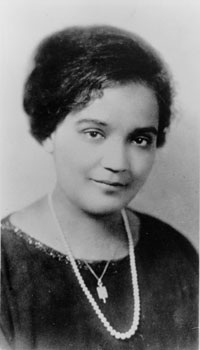 Jessie Redmon Fauset
Jessie Redmon Fauset
1882-1961
Jessie Redmon Fauset (April 27, 1882-April 30, 1961) was an American editor, poet, essayist and novelist.
Fauset was born in Fredericksville, an all-black hamlet in Camden County, New Jersey, also known as Free Haven (now incorporated into the borough of Lawnside, New Jersey). She was the daughter of Anna “Annie” Seamon and Redmon Fauset, a Presbyterian minister. Her mother died when she was still a young girl. Her father remarried Bella Huff (a white woman) and they had three children, including civil rights activist and folklorist. Arthur Fauset (1899-1983).
Fauset attended Philadelphia High School for girls and graduated as the only African-American in her class. After high school, Fauset graduated from Cornell University in 1905 and is believed to be the second black woman elected to Phi Beta Kappa. She later received her M.A. in French from the University of Pennsylvania. Fauset came to the NAACP’s journal, The Crisis, in 1912. From 1919 to 1926, she served as the literary editor of The Crisis under W.E.B. Du Bois. Eventually, 58 of her 77 published works first appeared in the journal’s pages. She is the author of four novels: There Is Confusion (1924), Plum Bun (1928), The Chinaberry Tree: A Novel of American Life (1931) and Comedy, American Style (1933). She is an honorary member of Delta Sigma Theta.
Fauset worked as a schoolteacher for many years and retired from teaching in 1944. She died in 1961 from heart failure.
Source: http://en.wikipedia.org/wiki/Jessie_Redmon_Fauset#Novels
 Bibliography
Bibliography
Press your browser’s BACK button to return to the previous page.
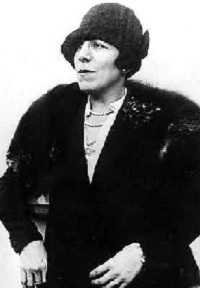 Edna Ferber
Edna Ferber
1885-1968
Edna Ferber (August 15, 1885-April 16, 1968) was an American novelist, short story writer and playwright. Her novels were especially popular and included the Pulitzer Prize-winning So Big (1924), Show Boat (1926) and Giant (1952).
Ferber was born August 15, 1885, in Kalamazoo, Michigan, to a Hungarian-born Jewish storekeeper and his Milwaukee, Wisconsin-born wife, Jacob Charles and Julia (Neumann) Ferber. After living in Chicago, Illinois, and Ottumwa, Iowa, at age 12 Ferber and her family moved to Appleton, Wisconsin, where she graduated from high school and briefly attended Lawrence University. She took newspaper jobs at The Appleton Daily Crescent and The Milwaukee Journal before publishing her first novel. She covered the 1920 Republican National Convention and 1920 Democratic National Convention for the United Press Association.
Ferber’s novels generally featured strong female protagonists, along with a rich and diverse collection of supporting characters. She usually highlighted at least one strong secondary character who faced discrimination ethnically or for other reasons; through this technique, Ferber demonstrated her belief that people are people and that the not-so-pretty persons have the best character. In 1925, she won the Pulitzer Prize for her book, So Big.
Ferber was a member of the Algonquin Round Table, a group of wits who met for lunch every day at the Algonquin Hotel in New York. Ferber and another member of the Round Table, Alexander Woollcott, were longtime enemies, their antipathy lasting until Woollcott’s death in 1943.
In 2008, The Library of America selected Ferber’s article, “Miss Ferber Views ‘Vultures at Trial,’” for inclusion in its two-century retrospective of American True Crime.
Ferber died of stomach cancer at the age of 82 at her home in New York City.
Source: http://en.wikipedia.org/wiki/Edna_Ferber
 Bibliography
Bibliography
Press your browser’s BACK button to return to the previous page.
 Lawrence Ferlinghetti
Lawrence Ferlinghetti
1919-2021
Lawrence Ferlinghetti (born March 24, 1919) is a poet who is best known as the co-owner of the City Lights Bookstore and publishing house, which published early literary works of the Beat Generation, including Jack Kerouac, Kenneth Rexroth and Allen Ginsberg.
Ferlinghetti was born of an Italian-Portuguese-Sephardic immigrant family in Yonkers, New York. He attended the University of North Carolina at Chapel Hill and then served in the U.S. Navy during World War II. After the war, he earned a master’s degree from Columbia University and a doctorate from the Sorbonne. While studying in Paris, he met Kenneth Rexroth, who later persuaded him to go to San Francisco to experience the growing literary scene there. Between 1951 and 1953, he taught French, wrote literary criticism and painted.
In 1953, Ferlinghetti and Peter D. Martin started a bookshop that they named City Lights after a film magazine Martin had started. Two years later, after Martin had left for New York, Ferlinghetti started the publishing house, specializing in poetry. The most famous publication was “Howl,” the poem by Allen Ginsberg that was initially impounded by the authorities and subject of a groundbreaking legal case.
Ferlinghetti’s best-known collection of poetry is A Coney Island of the Mind, which has been translated into nine languages. In 1998, he was named Poet Laureate of San Francisco. In addition to writing and publishing poetry and running the bookstore, Ferlinghetti continues to paint. His work has been exhibited in galleries and museums.
He died died on February 22, 2021.
Source: http://www.americanpoems.com/poets/Lawrence-Ferlinghetti
 Bibliography
Bibliography
Press your browser’s BACK button to return to the previous page.
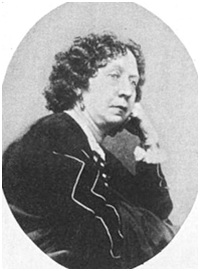 Fanny Fern
Fanny Fern
1811-1872
Fanny Fern, born Sarah Payson Willis (July 9, 1811-October 10, 1872), was an American writer who was the first woman to have a regular newspaper column. She was also a humorist, novelist and author of children’s stories in the 1850s-1870s. Fern’s great popularity has been attributed to her conversational style and sense of what mattered to her – mostly middle-class female readers. By 1855, Fern commanded $100 per week for her New York Ledger column and was the highest-paid columnist in the United States.
Willis was born in Portland, Maine, to newspaper owner Nathaniel Willis and Hannah Parker; she was the fifth of eight children. Willis’ surname was to change often in her life, throughout three marriages and the adoption of her chosen pen name, “Fanny Fern.” She decided on the pen name because it reminded her of childhood memories of her mother picking ferns. Feeling that this chosen name was a better fit, she used it also in her personal life; eventually, most of her friends and family called her “Fanny.”
Willis attended Catharine Beecher’s boarding school in Hartford, Connecticut. Beecher later described her as one of her “worst-behaved girls” (adding that she also “loved her the best”). Here the girl had her first taste of literary success when her compositions were published in the local newspaper. She also attended the Saugus Female Seminary. After returning home, Willis wrote and edited articles for her father’s Christian newspapers, The Puritan Recorder and The Youth’s Companion.
Willis published her first article, “The Governess,” in November 1851 in the new Boston newspaper, Olive Branch, followed by some short satirical pieces there and in True Flag; soon after, she regularly began using the name Fanny Fern for all of her articles. In 1852, on her own with two daughters to support, she began writing in earnest. She sent samples of her work under her own name to her brother, Nathaniel, by then a magazine owner, but he refused them and said her writing was not marketable outside Boston. He was proved wrong, as newspapers and periodicals in New York and elsewhere began printing Fanny Fern’s “witty and irreverent columns.”
In the summer of 1852, Fern was hired by the publisher Oliver Dyer at twice her salary to publish a regular column exclusively in his New York newspaper, Musical World and Times, becoming the first woman to do so. The next year, Dyer helped her find a publisher for her first two books: Fern Leaves from Fanny’s Portfolio (1853), a selection of her more sentimental columns, and Little Ferns for Fanny’s Little Friends (1853), a children’s book.
Fern’s first book, Fern Leaves (1853), was a best seller. It sold 46,000 copies in the first four months, and more than 70,000 copies the first year. Three years into her career, in 1855, she was earning $100 a week for her column in The New York Ledger, making her the highest-paid columnist in the United States. Her first regular column appeared on January 5, 1856, and would run weekly, without exception, until October 12, 1872, when the last edition was printed two days after her death. Fern wrote two novels: Ruth Hall (1854) and Rose Clark.
Fern battled with cancer for six years and died October 10, 1872.
Source: http://en.wikipedia.org/wiki/Fanny_Fern
 Bibliography
Bibliography
Press your browser’s BACK button to return to the previous page.
 Susan Ferrier
Susan Ferrier
1782-1854
Susan Edmonstone Ferrier lived from September 17, 1782 to 1854. She was a novelist at a time when that was not quite an acceptable thing for a young lady to do.
Ferrier was the youngest of 10 children of Helen Coutts and James Ferrier, a prominent Scottish lawyer who also managed the estates of the 5th Duke of Argyll. Susan grew up and was educated in Edinburgh but, as a child, would often accompany her father on business to Inveraray, giving her a sense of life beyond the Highland Line that she would put to good use in her novels.
She moved to London in 1800 but returned to settle in Edinburgh in 1804. Here, she formed many links with key literary figures of the day, including Sir Walter Scott, who knew her father professionally.
Her own first novel was published, initially anonymously, in serial form in Blackwood’s Magazine in 1818. Marriage was a satirical and humorous account of the perils that befall a Lowland lady who elopes with a Highland laird. Her second novel, The Inheritance, which was published in 1824, again in serial form in Blackwood’s Magazine, has led to Ferrier being compared with Jane Austen. Her third and final novel, Destiny, was published in 1831.
Source: http://www.undiscoveredscotland.co.uk/usbiography/f/susanedmonstouneferrier.html
 Bibliography
Bibliography
Press your browser’s BACK button to return to the previous page.
 Jasper Fforde
Jasper Fforde
1961-
Jasper Fforde (born January 11, 1961) is a British novelist. Fforde is mainly known for his Thursday Next novels, although he has written several books in the loosely connected Nursery Crime series and begun two more independent series: The Last Dragonslayer and Shades of Grey.
Fforde was born in London. His father was John Standish Fforde, the 24th Chief Cashier for the Bank of England. Fforde was educated at the progressive Dartington Hall School and his early career was spent as a focus puller in the film industry, where he worked on a number of films, including The Trial, Quills, GoldenEye and Entrapment.
Fforde published his first novel, The Eyre Affair, in 2001. His other published books include a series of novels starring the literary detective Thursday Next: Lost in a Good Book, The Well of Lost Plots, Something Rotten, First among Sequels and One of Our Thursdays Is Missing.
The Big Over Easy (2005), set in the same alternative universe as the Next novels, is a reworking of his first written novel, which initially failed to find a publisher. The followup to The Big Over Easy, The Fourth Bear, was published in July 2006 and focuses on Goldilocks and the Three Bears.
Shades of Grey, the first novel in a new series, was published December 2009. The sixth Thursday Next novel, One of Our Thursdays Is Missing, was published in February 2011. Fforde also plans a third Nursery Crime novel, The Last Great Tortoise Race.
In November 2010, he produced The Last Dragonslayer. The second book in the series, The Song of the Quarkbeast, was released in November 2011.
Jasper Fforde published a story in the Welsh edition of the UK Big Issue magazine called “We Are All Alike” on September 19, 2009. He also published “The Locked Room Mystery Mystery” in The Guardian newspaper on November 24, 2007.
Source: http://en.wikipedia.org/wiki/Jasper_Fforde
 Bibliography
Bibliography
Press your browser’s BACK button to return to the previous page.
 Michael Field (K.H. Bradley and E.E. Cooper)
Michael Field (K.H. Bradley and E.E. Cooper)
1846-1914/1862-1913
Michael Field was a pseudonym used for the poetry and verse drama of Katherine Harris Bradley (October 27, 1846-September 26, 1914) and her niece and ward, Edith Emma Cooper (January 12, 1862-December 13, 1913). As Field they wrote around 40 works together and a long journal, Works and Days.
Katherine Bradley was born in Birmingham, England, the daughter of Charles Bradley, a tobacco manufacturer, and of Emma (nee Harris). She was educated at the College de France and Newnham College, Cambridge.
Bradley’s elder sister, Emma, married James Robert Cooper in 1860, and went to live in Kenilworth, where their daughter, Edith Emma Cooper, was born. Emma Cooper became an invalid for life after the birth of her second daughter, Amy, and Katherine Bradley, being her sister, stepped in to become the legal guardian of her niece, Edith Cooper.
The first joint publication as Michael Field was in 1884. They wrote a number of passionate love poems to each other, and their name, Michael Field, was their way of declaring their inseparable oneness. Friends referred to them as the Fields, the Michaels or the Michael Fields. They also were passionately devoted to their pets, in particular a dog named Whym Chow, for whom they wrote a book of poems named after him.
Their joint journal starts with an account of Bradley’s passion for Alfred Gerente, an artist in stained glass and brother of Henri Gerente, who was of an English background but worked mostly in France. It goes on to document Michael Field as a figure, among “his” literary counterparts, and a pet dog. When the latter died in 1906, the emotional pattern of the relationship was disturbed; both women became Roman Catholic converts in 1907. Their religious inclinations are reflected in their later works, where their earlier writing is influenced by classical and Renaissance culture, in its pagan aspects particularly. Other influences were Sappho, as understood by the late Victorians, and perhaps Walter Savage Landor.
Edith died of cancer in 1913, as did Katherine less than a year later.
Source: http://en.wikipedia.org/wiki/Michael_Field_%28author%29
 Bibliography
Bibliography
Press your browser’s BACK button to return to the previous page.
 Henry Fielding
Henry Fielding
1707-1754
Henry Fielding was born in Glastonbury in Somerset in 1707. The son of a army lieutenant and a judge’s daughter, he was educated at Eton School and the University of Leiden before returning to England, where he wrote a series of farces, operas and light comedies.
Fielding formed his own company and was running the Little Theatre, Haymarket, when one of his satirical plays began to upset the government. The passing of the Theatrical Licensing Act in 1737 effectively ended Fielding’s career as a playwright.
In 1739, Fielding turned to journalism and became editor of The Champion. He also began writing novels, including: The Adventures of Joseph Andrews (1742), Abraham Adams (1842) and Jonathan Wild (1743).
Fielding was made a justice of the peace for Westminster and Middlesex in 1748. He campaigned against legal corruption and helped his half-brother, Sir John Fielding, establish the Bow Street Runners.
In 1749, Fielding’s novel, The History of Tom Jones, was published to public acclaim. Critics agree that it is one of the greatest comic novels in the English language. Fielding followed this success with another well-received novel, Amelia (1751). Fielding continued as a journalist and his satirical journal, Covent Garden, continued to upset those in power.
Throughout his life, Fielding suffered from poor health and by 1752 he could not move without the help of crutches. In an attempt to overcome his health problems, Henry Fielding went to live in Portugal but this was not successful and he died in Lisbon in 1754.
Source: http://www.spartacus.schoolnet.co.uk/Jfielding.htm
 Bibliography
Bibliography
Press your browser’s BACK button to return to the previous page.
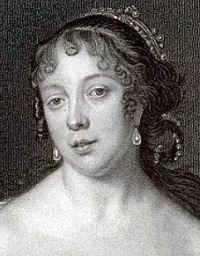 Anne Finch (Countess of Winchelsea)
Anne Finch (Countess of Winchelsea)
1661-1720
Anne Finch, Countess of Winchelsea, English author, daughter of Sir William Kingsmill of Sidmonton, near Southampton, was born in April 1661. Five months later her father died and her mother married Sir Thomas Ogle in 1662. Lady Ogle died in 1664 and nothing is heard of her daughter Anne until 1683, when she is mentioned as one of the maids of honor of Mary of Modena, Duchess of York.
In May 1684, she married Colonel Heneage Finch, who was attached to the Duke of York’s household. To him she addressed poems and versified epistles, in which he figures as Daphnis and she as Ardelia. At the Revolution, Heneage Finch refused the oath of allegiance to William and Mary, and he and his wife had no fixed home until they were invited in 1690 to Eastwell Park, Kent, by Finch’s nephew Charles, 4th Earl of Winchelsea, on whose death in 1712 Heneage Finch succeeded to the earldom.
Lady Winchelsea’s poems contain many copies of verse addressed to her friends and contemporaries. She was to some extent a follower of the “matchless Orinda” in the fervor of her friendships. During her lifetime, she published her poem, “The Spleen,” in Gildon’s Miscellany (1701) and a volume of Poems in 1713, which included a tragedy called “Aristomenes.”
The countess of Winchelsea died in London on August 5, 1720, leaving no children.
Source: http://www.luminarium.org/eightlit/finch/bio.php
 Bibliography
Bibliography
Press your browser’s BACK button to return to the previous page.
 David Fincher
David Fincher
1962-
David Andrew Leo Fincher (born August 28, 1962) is an American film and music video director who is known for his dark and stylish thrillers, such as Seven (1995), The Game (1997), Fight Club (1999), Panic Room (2002) and Zodiac (2007). Fincher received Academy Award nominations for Best Director for his 2008 film, The Curious Case of Benjamin Button, and his 2010 film, The Social Network, which also won him the Golden Globe and the BAFTA for Best Director. His most recent film is 2011’s The Girl with the Dragon Tattoo.
Fincher was born in Denver, Colorado, the son of Claire Mae (nee Boettcher), a mental health nurse who worked in drug addiction programs, and Howard Kelly Fincher, who worked as a bureau chief for Life under the name Jack Fincher. Fincher moved to Ashland, Oregon, in his teens, where he graduated from Ashland High School.
Inspired by Butch Cassidy and the Sundance Kid, Fincher began making movies at age eight with an 8mm camera. Fincher eschewed the film school route, getting a job loading cameras and doing other hands-on work for John Korty’s Korty Films. He was later hired by Industrial Light & Magic in 1983, where he worked on productions for Twice Upon a Time, Star Wars: Episode VI – Return of the Jedi, and Indiana Jones and the Temple of Doom. In 1984, he left ILM to direct a commercial for the American Cancer Society that would show a fetus smoking a cigarette. This quickly brought Fincher to the attention of producers in Los Angeles and he was given the chance to direct the documentary, The Beat of the Live Drum, featuring Rick Springfield in 1985. Though he would continue to direct spots for companies like Revlon, Converse, Nike, Pepsi, Sony and Levi’s, Fincher soon discovered music videos and went on to direct many promos.
Source: http://en.wikipedia.org/wiki/David_Fincher
 Bibliography
Bibliography
Press your browser’s BACK button to return to the previous page.
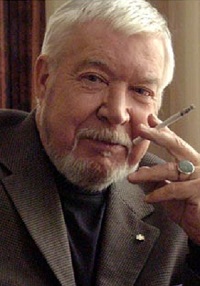 Timothy Findley
Timothy Findley
1930-2002
Timothy Irving Frederick Findley (October 30, 1930-June 21, 2002) was a Canadian novelist and playwright.
One of three sons, Findley was born in Toronto, Ontario, to Allan Gilmour Findley, a stockbroker, and his wife, the former Margaret Maude Bull. He was raised in the upper-class Rosedale district of the city, attending boarding school at St. Andrew’s College. He pursued a career in the arts, studying dance and acting, and had significant success as an actor before turning to writing. He was part of the original Stratford Festival company in the 1950s.
Findley’s first two novels, The Last of the Crazy People (1967) and The Butterfly Plague (1969), were originally published in Britain and the United States after having been rejected by Canadian publishers. Findley’s third novel, The Wars, was published to great acclaim in 1977 and went on to win the Governor General’s Award for fiction.
Findley was also the author of several dramas for television and stage. Elizabeth Rex, his most successful play, premiered at the Stratford Festival of Canada to rave reviews and won a Governor General’s award. Shadows, first performed in 2001, was his last completed work. In 2002 he was inducted into Canada’s Walk of Fame.
Findley died on June 21, 2002, in Brignoles, France, not far from his house in Cotignac.
Source: http://en.wikipedia.org/wiki/Timothy_Findley
 Bibliography
Bibliography
Press your browser’s BACK button to return to the previous page.
 Licia Fiol-Matta
Licia Fiol-Matta
Licia Fiol-Matta (Associate Professor, Latin American and Puerto Rican Studies) presented the following papers: “Chencha’s Gait: Latin Popular Music and Normativity in Myrta Silva,” at the Latin American Studies Program of the University of Pennsylvania (November 2006); “Gender Narratives and Female Figurations in Latin Music: Popular Music and Normativity in Myrta Silva,” at the Cuban Research Institute of Florida International University (May 2006); “Memoria y diaspora en Lydia Cabrera,” at the CUNY Graduate Center’s Department of Hispanic Literatures (March 2006); “Queer Performance in Myrta Silva: Popular Music and Normativity,” at the Places of the Queer Conference, Department of Spanish and Portuguese at the University of Texas at Austin (March 2006); “Memoria y diaspora en Lydia Cabrera,” at the Sixth CRI Conference on Cuban and Cuban American Studies at the Cuban Research Institute of Florida International University; “Poeticas de la memoria” (February 2006); “New Directions in Queer Latino Studies,” at the Los Angeles Queer Studies Conference, University of Southern California/UCLA; and “Body, Space, Sexuality” (November 2005).
Professor Fiol-Matta has received the following grants: The Puerto Rican Diaspora Grant from the CUNY-Caribbean Exchange Program, Center for Puerto Rican Studies, for her work titled “Latin Music: Gender Narratives, Female Figurations” (Spring 2007); the Daaz-Ayala Cuban and Latin American Popular Music Collection Travel Grant from the Cuban Research Institute, Florida International University, for “Latin Music: Gender Narratives, Female Figurations” (May 2006); a PSC-CUNY Research Award for “Latin American Women Writers, Exile, and Cultural Power” (2006-2007); the Puerto Rican Diaspora Grant, CUNY-Caribbean Exchange Program, Center for Puerto Rican Studies, for “Latin Music: Gender Narratives, Female Figurations” (Spring 2006); the National Endowment for the Humanities’ Faculty Research Award for “Remembering Cuba: Memory and Loss in Lydia Cabrera” (2005-2006); the CUNY Scholar Incentive Award for “Remembering Cuba: Memory and Loss in Lydia Cabrera” (2005-2006); and a PSC-CUNY Research Award (2005-2006) for “Latin American Women Writers, Exile and Cultural Power.”
Source: http://www.lehman.edu/lehman/enews/2007_02_05/feat_quorum.html
 Bibliography
Bibliography
Press your browser’s BACK button to return to the previous page.
 Bishop John Fisher
Bishop John Fisher
1469-1535
John Fisher, English cardinal and Bishop of Rochester, born at Beverly, received his first education at the collegiate church there. In 1484, he went to Michael House, Cambridge, where he took his degrees in arts in 1487 and 1491 and, after filling several offices in the university, became master of his college in 1499. He took holy orders and his reputation for learning and piety attracted the notice of Margaret Beaufort, mother of Henry VII, who made him her confessor and chaplain. In 1501, he became vice-chancellor. Later on, when chancellor, he was able to forward, if not to initiate entirely, the beneficent schemes of his patroness in the foundations of St. John’s and Christ’s colleges. In 1504, he was raised to the see of Rochester, to which he remained faithful, although the richer sees of Ely and Lincoln were offered to him.
He was nominated as one of the English prelates for the Lateran council (1512) but did not attend. A man of strict and simple life, he did not hesitate at the legatine synod of 1517 to censure the clergy, in the presence of the brilliant Cardinal Wolsey himself, for their greed of gain and love of display; and in the convocation of 1523 he freely opposed the cardinal’s demand for a subsidy for the war in Flanders. Although he was not the author of King Henry VIII’s book against Luther, he joined with his friend, Sir Thomas More, in writing a reply to the scurrilous rejoinder made by the reformer. He retained the esteem of the king until the divorce proceedings began in 1527; and then he set himself sternly in favor of the validity of the marriage. He was Queen Catherine’s confessor and her only champion and advocate.
Fisher was summoned (April 13) to take the oath prescribed by the Act of Succession, which he was ready to do, were it not that the preamble stated that the offspring of Catherine were illegitimate and prohibited all faith, trust and obedience to any foreign authority or potentate. Refusing to take the oath, he was committed on April 15 to the Tower, where he suffered greatly from the rigors of a long confinement.
On the passing of the Act of Supremacy (November 1534), in which the saving clause of convocation was omitted, he was attainted and deprived of his see. The council, with Thomas Cromwell at their head, visited him on May 7, 1535, and his refusal to acknowledge King Henry VIII as supreme head of the church was the ground of his trial.
The cardinal was brought to trial at Westminster on June 17, 1535 on the charge that he did “openly declare in English that the king, our sovereign lord, is not supreme head on earth of the Church of England,” and was condemned to a traitor’s death at Tyburn, a sentence afterward changed. He was beheaded on Tower Hill on June 22, 1535, after saying the Te Deum and the psalm, In te Domine speravi.
Source: http://www.luminarium.org/renlit/fisherbio.htm
 Bibliography
Bibliography
Press your browser’s BACK button to return to the previous page.
 Diane Gilliam Fisher
Diane Gilliam Fisher
1957-
Diane Gilliam Fisher (born 1957) is an American poet. She is author of several poetry collections, most recently Kettle Bottom (2004), which earned her numerous honors, including a spot on the American Booksellers Association Book Sense 2005 Top 10 Poetry Books list, and inclusion in The Pushcart Prize XXX anthology.
Gilliam Fisher has had her poems published in literary journals and magazines, including Wind Magazine, Appalachian Journal, Shenandoah and The Spoon River Poetry Review. She earned her bachelor’s and master’s degrees in Spanish and a Ph.D. in romance languages from Ohio State University, and an M.F.A. in creative writing from Warren Wilson College.
She lives in Ohio with her husband and children.
Source: http://en.wikipedia.org/wiki/Diane_Gilliam_Fisher
 Bibliography
Bibliography
Press your browser’s BACK button to return to the previous page.
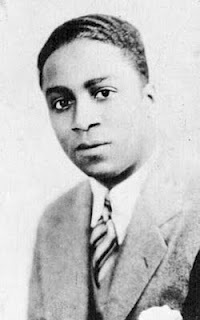 Rudolph Fisher
Rudolph Fisher
1897-1934
Rudolph Fisher (May 9, 1897 Washington, D.C.-December 26, 1934) was an African-American physician, radiologist, novelist, short story writer, dramatist, musician and orator. Fisher’s parents were John Wesley Fisher, a clergyman, and Glendora Williamson. Fisher had three children.
His first published work, “City of Refuge,” appeared in The Atlantic Monthly of February 1925. He went on in 1932 to write The Conjure-Man Dies, the first novel with a black detective as well as the first detective novel with only black characters. Fisher was an active participant in the Harlem Renaissance, primarily as a novelist, but also as a musician.
Born in Washington, D.C., in the late 19th century, Fisher grew up in Providence, Rhode Island, graduating from Classical High School and attending Brown University. He earned his Bachelor of Arts from Brown in 1919, where he delivered the valedictory address, and received a Master of Arts a year later. He went on to attend Howard University Medical School and graduated in 1924. He held a fellowship at Columbia University School of Medicine, during which time he published two scientific articles of his research on treating bacteriophage viruses with ultraviolet light.
Fisher died after unsuccessful abdominal surgery in 1934 at the age of 37.
Source: http://en.wikipedia.org/wiki/Rudolph_Fisher
 Bibliography
Bibliography
Press your browser’s BACK button to return to the previous page.
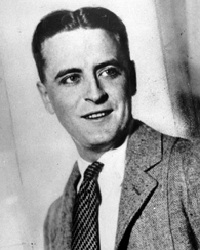 F. Scott Fitzgerald
F. Scott Fitzgerald
1896-1940
Francis Scott Fitzgerald (born Sept. 24, 1896, St. Paul, Minnesota-Dec. 21, 1940, Hollywood, California) was a novelist and short story writer. Fitzgerald attended Princeton University but dropped out with bad grades. In 1920, he married Zelda Sayre, daughter of a respected Alabama judge.
His works, including the early novels, This Side of Paradise (1920) and The Beautiful and Damned (1922), and the story collections, Tales of the Jazz Age (1922) and All the Sad Young Men (1926), capture the Jazz Age’s vulgarity and dazzling promise. His brilliant The Great Gatsby, a story of American wealth and corruption, was eventually acclaimed one of the century’s greatest novels.
In 1924, Scott and Zelda became part of the expatriate community on the French Riviera, the setting of Tender Is the Night (1934). His fame and prosperity proved disorienting to them both and he became seriously alcoholic. Zelda never fully recovered from a mental breakdown in 1932 and spent most of her remaining years in a sanitarium.
In 1937, Scott moved to Hollywood to write film scripts; the experience inspired the unfinished The Last Tycoon (1941). He died of a heart attack at age 44.
Source: http://www.answers.com/topic/f-scott-fitzgerald
 Bibliography
Bibliography
Press your browser’s BACK button to return to the previous page.
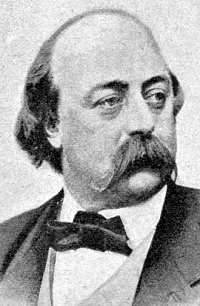 Gustave Flaubert
Gustave Flaubert
1821-1880
Gustave Flaubert (December 12, 1821-May 8, 1880) was a French writer who is counted among the greatest Western novelists. He is known especially for his first published novel, Madame Bovary (1857), and for his scrupulous devotion to his art and style.
Flaubert was born in Rouen, Seine-Maritime, in the Haute-Normandie region of France. He was educated at the Lycee Pierre Corneille in Rouen and did not leave until 1840, when he went to Paris to study law. Toward the close of 1840, he traveled in the Pyrenees and Corsica. In 1846, after an attack of epilepsy, he left Paris and abandoned the study of law. After leaving Paris, he returned to Croisset, near the Seine, close to Rouen, and lived with his mother in their home for the rest of his life.
His first finished work was November, a novella, which was completed in 1842. In September 1849, Flaubert completed the first version of a novel, The Temptation of Saint Anthony. In 1850, Flaubert began work on Madame Bovary. In 1858, he traveled to Carthage to gather material for his next novel, Salammbo. The novel was completed in 1862 after four years of work.
Drawing on his youth, Flaubert next wrote L’Education sentimentale (Sentimental Education), an effort that took seven years. His last complete novel, it was published in 1869.
The 1870s were a difficult time for Flaubert. Prussian soldiers occupied his house during the War of 1870 and his mother died in 1872. After her death, he fell into financial difficulty. Flaubert suffered from venereal diseases most of his life. His health declined and he died at Croisset of a cerebral hemorrhage in 1880 at the age of 58.
At the time of his death, he may have been working on a further historical novel, based on the Battle of Thermopylae.
Source: http://en.wikipedia.org/wiki/Gustave_Flaubert
 Bibliography
Bibliography
Press your browser’s BACK button to return to the previous page.
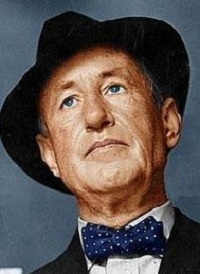 Ian Fleming
Ian Fleming
1908-1964
Ian Lancaster Fleming (May 28, 1908-August 12, 1964) was a British author, journalist and Naval Intelligence Officer. Fleming is best known for creating the fictional spy James Bond and the series of 12 novels and nine short stories about the character.
Fleming was from a wealthy family, connected to the merchant bank Robert Fleming & Co., and his father was MP for Henley from 1910 until his death on the Western Front in 1917. Educated at Eton, the Royal Military Academy, Sandhurst and the universities of Munich and Geneva, Fleming moved through a number of jobs before he started writing.
The Bond books are among the biggest-selling series of fictional books of all time, having sold more than 100 million copies worldwide. Fleming also wrote the children’s story, “Chitty Chitty Bang Bang,” and two works of nonfiction. While working in British Naval Intelligence during World War II, Fleming was involved in the planning stages of Operation Mincemeat and Operation Goldeneye, the former of which was successfully carried out. Fleming was also involved in the planning and overseeing of two active service units, 30 Assault Unit and T-Force.
His experiences of the people he met during his wartime service provided much of the background and detail of the Bond novels and his career as a journalist added color and depth to the stories.
Fleming was a heavy smoker and heavy drinker and suffered from heart disease; he died in the early morning of August 12, 1964 from a heart attack.
Source: http://en.wikipedia.org/wiki/Ian_Fleming
 Bibliography
Bibliography
Press your browser’s BACK button to return to the previous page.
 John Fletcher
John Fletcher
1579-1625
John Fletcher was born at Rye, Sussex, in 1579 and entered Benet College (now Corpus Christi), Cambridge, in 1591; but of the details of his life from this time until his appearance as a dramatist little is known. He collaborated with Francis Beaumont from about 1605 to 1612 and, after Beaumont’s withdrawal, with Shakespeare, Jonson, Massinger and others.
Beaumont and Fletcher were the first recruits to the profession of playwriting who came of distinguished families and habitually moved in wealthy circles; and this social environment was early suggested as an explanation of their power of representing naturally the conversation of high-born ladies and gentlemen.
The first quarto of The Faithful Shepherdess is undated, but it was certainly issued before May 1610. The play had been unsuccessfully produced not long before, perhaps in 1608 or 1609.
The Wild Goose Chase, we are told by the publisher of the first folio edition of Beaumont and Fletcher, was lost when that volume was compiled; it reappeared later and was issued separately, in folio, in 1652. A second edition appeared in the folio of 1679. The comedy is known to have been acted as early as 1621.
John Fletcher died of the plague in 1625.
Source: http://www.theatrehistory.com/british/fletcher001.html
 Bibliography
Bibliography
Press your browser’s BACK button to return to the previous page.
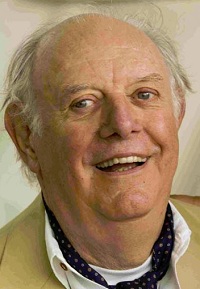 Dario Fo
Dario Fo
1926-
A popular and controversial playwright, actor and director, Dario Fo has earned international acclaim for his political satires and farces. Often considered the rightful heir of Aristophanes, Fo has led the field in political satire in Europe for more than 30 years. The main targets of his ideologically inspired attacks have been capitalism, imperialism and corruption in the Italian government. For performances outside of Italy, his comedies are frequently adapted to reflect local political conditions.
Born in 1926, the son of a railroad worker, Fo began his career as a performer in satirical cabaret-style revues. Later, he wrote, produced and directed a string of successful “bourgeois comedies” (so called because they were performed mainly for middle-class audiences). He has also written for and performed in several films and his one foray into television was as writer, director and co-star of Italy’s most popular television series, “Canzonissima,” which was ultimately removed from the airwaves by the Italian government after Fo portrayed a 12th century pope who was known for being particularly cruel and hanging monks by their tongues from the church doors when they didn’t agree with him.
Fo was refused a visa to enter the United States during the 1970s and ’80s under the McClaren Act. It was not until Robert Brustein and the American Repertory Theater invited him to perform in 1986 that he was finally granted entry. At the time of this appearance, he made a point to thank Ronald Reagan for all the publicity that had been generated by keeping him out of the country.
Since 1954, Fo has been married to Franca Rame, his chief collaborator and co-star. His best known plays include: Accidental Death of an Anarchist; We Won’t Pay! We Won’t Pay!; and Orgasmo Adulto Escapes from the Zoo. He was awarded the Nobel Prize for Literature in 1997 for “emulating the jesters of the Middle Ages in scourging authority and upholding the dignity of the downtrodden.”
Source: https://en.wikipedia.org/wiki/Dario_Fo
 Bibliography
Bibliography
Press your browser’s BACK button to return to the previous page.
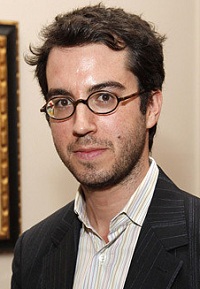 Jonathan Safran Foer
Jonathan Safran Foer
1977-
Jonathan Safran Foer (born February 21, 1977) is an American author best known for his novels, Everything Is Illuminated (2002) and Extremely Loud and Incredibly Close (2005). In 2009, he published a work of nonfiction, Eating Animals.
Foer was born in Washington, D.C., the son of Albert Foer, a lawyer and President of the American Antitrust Institute, and Esther Safran Foer, a child of Holocaust survivors who was born in Poland and is now the Director of the Sixth & I Historic Synagogue.
Foer attended Georgetown Day School and Princeton University. He graduated from Princeton in 1999 with a degree in philosophy and traveled to Ukraine. In 2001, he edited the anthology, A Convergence of Birds: Original Fiction and Poetry Inspired by the Work of Joseph Cornell, to which he contributed the short story, “If the Aging Magician Should Begin to Believe.” His Princeton thesis grew into a novel, Everything Is Illuminated, which was published in 2002.
Foer’s second novel, Extremely Loud and Incredibly Close, was published in 2005. Also in 2005, Foer wrote the libretto for an opera, Seven Attempted Escapes from Silence, which premiered at the Berlin State Opera on September 14, 2005.
Foer published his first book of nonfiction, Eating Animals, on November 2, 2009. The book intersperses a personal narrative with a more “broad argument” about vegetarianism.
In spring 2008, Foer taught writing for the first time as a visiting professor of fiction at Yale University. He is currently a professor in the Graduate Creative Writing Program at New York University and published his third novel, Tree of Codes, in November 2010.
Source: http://en.wikipedia.org/wiki/Jonathan_Safran_Foer
 Bibliography
Bibliography
Press your browser’s BACK button to return to the previous page.
 Theodor Fontane
Theodor Fontane
1819-1898
Theodor Fontane (December 30, 1819-September 20, 1898) was a German novelist and poet, regarded by many as the most important 19th century German-language realist writer.
Fontane was born in Neuruppin into a Huguenot family. At the age of 16, he was apprenticed to an apothecary, his father’s profession. He became an apothecary himself and, in 1839, at the age of 20, wrote his first work (Heinrichs IV. erste Liebe, now lost). His further education was in Leipzig, where he came into contact with the progressives of the Vormarz. Fontane’s first published work, the novella Geschwisterliebe (Sibling Love), appeared in The Berlin Figaro in December 1839.
Fontane published articles in the Leipzig newspaper, Die Eisenbahn, and translated Shakespeare. In 1843, he joined a literary club in Berlin called Tunnel uber der Spree (Tunnel over the River Spree), where he came into contact with many of the most renowned German writers.
In 1844 Fontane enlisted in the Prussian army and set out on the first of numerous journeys to England, which fostered his interest in Old English ballads, a form he began to imitate. Fontane’s books about Britain include Ein Sommer in London (1854), Aus England, Studien und Briefe (1860) and Jenseit des Tweed, Bilder und Briefe aus Schottland (1860). The success of the historical novels of Walter Scott had helped to make British themes much en vogue on the continent. Fontane’s Gedichte (1851) and ballad “Manner und Helden” (1860) tell of Britain’s former glories.
Back in Germany, his fascination with the countryside surrounding Berlin may be seen in his delightfully picturesque Wanderungen durch die Mark Brandenburg (1862-1882), in which he successfully transposed his former fascination with British historical matters to his native soil.
In 1870, he became drama critic for the liberal Vossische Zeitung, a position he held until retirement. He had already written about Prussia’s war against Denmark in Der schleswig-holsteinische Krieg im Jahre 1864 (1866) and the Austro-Prussian War in Der deutsche Krieg von 1866 (1869). He went to the front to observe the Franco-Prussian War in 1870 and, after being taken prisoner at Vaucouleurs, remained in French captivity for three months. He set down his experiences in Kriegsgefangen Erlebtes 1870 (1871) and published his observations on the campaign in Der Krieg gegen Frankreich 1870-71 (1874-1876).
At the age of 57, Fontane finally worked in the genre for which he is remembered, the novel. His fine historical romance, Vor dem Sturm (1878), was followed by a series of novels of modern life, notably L’Adultera (1882). In his novels – Frau Jenny Treibel; Irrungen, Wirrungen; and Effi Briest (1894) – he found his very own tone, yielding insights into the lives of the nobility as well as the “common man.” His achievement there was later described as poetic realism. In Der Stechlin (1899), his last completed novel, Fontane adapted the realistic methods and social criticism of contemporary French fiction to the conditions of Prussian life.
Source: http://en.wikipedia.org/wiki/Theodor_Fontane
 Bibliography
Bibliography
Press your browser’s BACK button to return to the previous page.
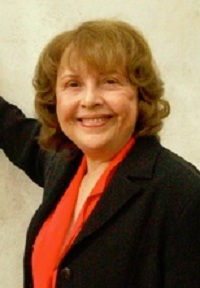 Montserrat Fontes
Montserrat Fontes
1940s-
Montserrat Fontes is a distinguished writer whose first novel, First Confession, has been widely praised as a major contribution to Chicana fiction. Her work is often taught in the CSLA U.S. Ethnic Literature course. Her second novel, Dreams of the Centaur, is currently being translated into German and French.
Source: http://www.goodreads.com/author/show/200315.Montserrat_Fontes
 Bibliography
Bibliography
Press your browser’s BACK button to return to the previous page.
 Esther Forbes
Esther Forbes
1891-1967
Esther Louise Forbes (June 28, 1891-August 12, 1967) was an American novelist, historian and children’s writer who received the Pulitzer Prize and the Newbery Medal.
Forbes was born in Westborough, Massachusetts, the fifth of six children born to Harriette Merrifield and William Trowbridge Forbes. After attending school in Wisconsin, Forbes served as a member of the editorial staff at Houghton Mifflin Company in Boston. Her first novel, Oh Genteel Lady!, was published in 1926 and was made a selection by the then-newly formed Book-of-the-Month Club. She married Albert Hoskins in 1926. They were divorced in 1933.
By 1938, Forbes had published a number of books and first received critical and public acclaim for her novel, A Mirror for Witches, which was produced in several other formats (e.g., theatrical) and has never been out of print. Forbes’ 1942 biography, Paul Revere and the World He Lived In, put her even more firmly in the spotlight and subsequently brought her the Pulitzer Prize for History. Her novel, Johnny Tremain (1943), about the life of a young silversmith apprentice in Boston in the early 1770s, won the 1944 Newbery Medal and remains one of the most highly acclaimed books for young adults.
Forbes died in 1967 at age 76 in Worcester, Massachusetts.
Source: http://en.wikipedia.org/wiki/Esther_Forbes
 Bibliography
Bibliography
Press your browser’s BACK button to return to the previous page.
 Carolyn Forche
Carolyn Forche
1950-
Carolyn Forche is an American poet, editor, translator and human rights advocate.
Forche was born in Detroit, Michigan, on April 28, 1950, to Michael Joseph and Louise Nada Blackford Sidlosky. Forche earned a B.A. in International Relations at Michigan State University in 1972 and MFA at Bowling Green State University in 1975. She taught at a number of universities, including Bowling Green State University, Michigan State University, the University of Virginia, Skidmore College, Columbia University, San Diego State University and in the Master of Fine Arts program at George Mason University. She is now Director of the Lannan Center for Poetry and Poetics and holds the Lannan Chair in Poetry at Georgetown University in Washington, D.C.
Forche’s first poetry collection, Gathering the Tribes (1976), won the Yale Series of Younger Poets Competition, leading to publication by Yale University Press.
Her second book, The Country between Us (1981), was published with the help of Margaret Atwood. It received the Poetry Society of America’s Alice Fay di Castagnola Award and was also the Lamont Poetry Selection of the Academy of American Poets. She won the 2006 Robert Creeley Award.
Her articles and reviews have appeared in The New York Times, The Washington Post, The Nation, Esquire, Mother Jones, Boston Review and others.
Her anthology, Against Forgetting: Twentieth-Century Poetry of Witness, was published in 1993, and her third book of poetry, The Angel of History (1994), was chosen for The Los Angeles Times Book Award. Her works include the famed poem, “The Colonel.”
Among her translations are: Mahmoud Darwish’s Unfortunately, It Was Paradise: Selected Poems (2003); Claribel Alegria’s Sorrow (1999); and Robert Desnos’ Selected Poetry (with William Kulik, for the Modern English Poetry Series, 1991).
Her fourth book of poems, Blue Hour, was released in 2003. Other books include a memoir, The Horse on Our Balcony (2010), and a fifth collection of poems, In the Lateness of the World.
Source: http://en.wikipedia.org/wiki/Carolyn_Forch%C3%A9
 Bibliography
Bibliography
Press your browser’s BACK button to return to the previous page.
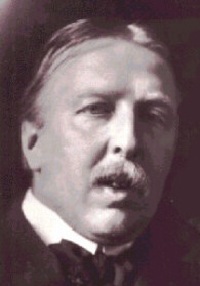 Ford Madox Ford
Ford Madox Ford
1873-1939
Ford Madox Ford (December 17, 1873-June 26, 1939) was an English novelist, poet, critic and editor whose journals, The English Review and The Transatlantic Review, were instrumental in the development of early 20th century English literature. He is now best remembered for The Good Soldier (1915), a novel set just before World War I, the Parade’s End tetralogy (1924-28) and The Fifth Queen trilogy (1906-08).
He was born as Ford Hermann Hueffer to Catherine and Francis Hueffer, the eldest of three. His father, who became music critic for The Times, was German and his mother was English. He went by the name of Ford Madox Hueffer and, in 1919, changed it to Ford Madox Ford (allegedly because it sounded too German) in honor of his grandfather, the Pre-Raphaelite painter Ford Madox Brown, whose biography he had written.
Ford was involved in British war propaganda after the outbreak of World War I. He worked for the War Propaganda Bureau and wrote two propaganda books, namely When Blood Is Their Argument: An Analysis of Prussian Culture (1915), and Between St. Dennis and St. George: A Sketch of Three Civilizations (1915).
After writing the two propaganda books, Ford enlisted at 41 years of age into the Welch Regiment on July 30, 1915, and was sent to France, thus ending his cooperation with the War Propaganda Bureau. His combat experiences and his previous propaganda activities inspired his tetralogy, Parade’s End (1924-1928), set in England and on the Western Front before, during and after World War I.
Ford also wrote dozens of novels as well as essays, poetry, memoirs and literary criticism, and collaborated with Joseph Conrad on three novels: The Inheritors (1901), Romance (1903) and The Nature of a Crime (1924). In the three to five years after this direct collaboration, Ford’s greatest achievement was The Fifth Queen trilogy (1906-1908), historical novels based on the life of Katharine Howard. His novel, Ladies Whose Bright Eyes (1911) is, in a sense, the reverse of A Connecticut Yankee in King Arthur’s Court.
Ford spent the last years of his life teaching at Olivet College in Michigan and died in Deauville, France, at the age of 65.
Source: http://en.wikipedia.org/wiki/Ford_Madox_Ford
 Bibliography
Bibliography
Press your browser’s BACK button to return to the previous page.
 John Ford
John Ford
1586-1640
John Ford (baptized April 17, 1586-c. 1639) was an English Jacobean and Caroline playwright and poet born in Ilsington in Devon in 1586.
Ford left home to study in London, although more specific details are unclear – a 16-year-old John Ford of Devon was admitted to Exeter College, Oxford, on March 26, 1601, but this was when the dramatist had not yet reached his 16th birthday. He joined an institution that was a prestigious law school but also a centre of literary and dramatic activity – the Middle Temple. A prominent junior member in 1601 was the playwright John Marston. It is unknown whether Ford ever actually studied law while a resident of the Middle Temple, or whether he was strictly a gentleman boarder, which was a common arrangement at the time.
It was not until 1606 that Ford wrote his first works for publication. In the spring of that year he was expelled from Middle Temple, due to his financial problems, and “Fame’s Memorial” and “Honour Triumphant” soon followed. Both works are clear bids for patronage: “Fame’s Memorial” is an elegy of 1,169 lines on the recently deceased Charles Blount, 1st Earl of Devonshire, while “Honour Triumphant” is a prose pamphlet, a verbal fantasia written in connection with the jousts planned for the summer 1606 visit of King Christian IV of Denmark. It is unknown whether either of these brought any financial remuneration to Ford; yet, by June 1608, he had enough money to be readmitted to the Middle Temple.
Prior to the start of his career as a playwright, Ford wrote other nondramatic literary works – the long religious poem, “Christ’s Bloody Sweat” (1613), and two prose essays published as pamphlets, “The Golden Mean” (1613) and “A Line of Life” (1620). After 1620, he began active dramatic writing, first as a collaborator with more experienced playwrights – primarily Thomas Dekker, but also John Webster and William Rowley – and, by the later 1620s, as a solo artist.
Ford is best known for the tragedy ’Tis Pity She’s a Whore (1633), a family drama with a plot line of incest. The play’s title has often been changed in new productions, sometimes being referred to as simply Giovanni and Annabella – the play’s leading, incestuous brother-and-sister characters; in a 19th century work it is coyly called The Brother and Sister. Shocking as the play is, it is still widely regarded as a classic piece of English drama.
Source: http://en.wikipedia.org/wiki/John_Ford_%28dramatist%29
 Bibliography
Bibliography
Press your browser’s BACK button to return to the previous page.
 Milos Forman
Milos Forman
1932-2018
Jan Tomas Forman (born February 18, 1932), better known as Milos Forman, was a Czech-American director, screenwriter, professor and an emigrant from Czechoslovakia. Two of his films, One Flew Over the Cuckoo’s Nest and Amadeus, are among the most celebrated in the history of film, both gaining him the Academy Award for Best Director. He was nominated for the same award for The People vs. Larry Flynt. He also won Golden Globe, Cannes, Berlinale, BAFTA, Cesar, David di Donatello, European Film Academy and Czech Lion awards.
Forman was born in Caslav, Czechoslovakia (present-day Czech Republic), the son of Anna (nee Svabova), who ran a summer hotel, and Rudolf Forman, a professor.
Forman lived with relatives during World War II and later discovered that his biological father was a Jewish architect, Otto Kohn. After the war, Forman attended King George College public school in the spa town Podebrady. He later studied screenwriting at the Academy of Performing Arts in Prague. During the Warsaw Pact invasion of Czechoslovakia in summer 1968, he left Europe for the United States.
He was a professor emeritus at Columbia University.
He wrote poems and published an autobiography, My Two Worlds.
After a short illness, he died at Danbury Hospital near his home in Warren, Connecticut on April 13, 2018 at age 86.
Source: http://en.wikipedia.org/wiki/Milo%C5%A1_Forman
 Bibliography
Bibliography
Press your browser’s BACK button to return to the previous page.
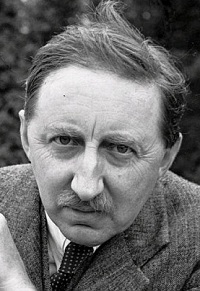 E.M. Forster
E.M. Forster
1879-1970
Edward Morgan Forster (January 1, 1879-June 7, 1970) was an English novelist, short story writer, essayist and librettist. He is known best for his ironic and well-plotted novels examining class difference and hypocrisy in early 20th century British society.
Forster was born into an Anglo-Irish and Welsh middle-class family at 6 Melcombe Place, Dorset Square, London NW1. He was the only child of Edward Morgan Llewellyn Forster, an architect, and Alice Clara “Lily” (nee Whichelo). His name was officially registered as Henry Morgan Forster, but at his baptism he was accidentally named Edward Morgan Forster.
At King’s College, Cambridge, between 1897 and 1901, he became a member of a discussion society known as the Apostles (formally named the Cambridge Conversazione Society). Many of its members went on to constitute what came to be known as the Bloomsbury Group, of which Forster was a peripheral member in the 1910s and 1920s.
In World War I, as a conscientious objector, he volunteered for the International Red Cross, travelling to Alexandria, Egypt.
Forster spent time in India in the early 1920s as the private secretary to Tukojirao III, the Maharajah of Dewas. The Hill of Devi is his nonfictional account of this trip. After returning from India, he completed his last novel, A Passage to India (1924).
In the 1930s and 1940s Forster became a successful broadcaster on BBC Radio and a public figure associated with the Union of Ethical Societies. He was awarded a Benson Medal in 1937.
Forster was elected an honorary fellow of King’s College, Cambridge, in January 1946, and lived for the most part in the college, doing relatively little.
Forster died of a stroke in Coventry on June 7, 1970 at the age of 91.
Source: http://en.wikipedia.org/wiki/E._M._Forster
 Bibliography
Bibliography
Press your browser’s BACK button to return to the previous page.
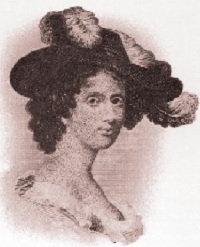 Hannah Webster Foster
Hannah Webster Foster
1758-1840
Hannah Webster Foster was born in Salisbury, Massachusetts, on September 10, 1758, the daughter of a wealthy merchant. She was sent to boarding school after her mother, Hannah Wainwright, died in 1762. Her childhood and adolescence are largely undocumented.
In the 1770s, she began writing political articles for Boston newspapers and, in 1785, she married a Dartmouth graduate, the Rev. John Foster. The two settled in Brighton, Massachusetts, where John Foster served as a pastor at First Church. The couple had six children; two of their daughters, Harriet Vaughan Cheney and Eliza Lanesford Cushing, went on to become famous writers during the 1800s.
Her first novel, The Coquette, was based on the life of Elizabeth Whitman and published anonymously in 1797. In 1798, Foster published her second novel, The Boarding School, which was never reprinted and not nearly as popular as The Coquette. Hannah Foster did not publish any further novels.
She died at age 81 in Montreal on April 17, 1840.
Source: http://en.wikipedia.org/wiki/The_Coquette
 Bibliography
Bibliography
Press your browser’s BACK button to return to the previous page.
 Thomas C. Foster
Thomas C. Foster
1952-
Thomas C. Foster grew up in West Cornfield, Ohio. He studied English at Dartmouth College and then Michigan State University. His academic writing has concentrated on 20th century British, American and Irish figures and movements – James Joyce, William Faulkner, Seamus Heaney, John Fowles, Derek Mahon, Eavan Boland, modernism and postmodernism.
He has been teaching literature and writing since 1975, the past 21 years at the University of Michigan-Flint.
In addition to How to Read Novels Like a Professor (2008) and How to Read Literature Like a Professor (2003), he is the author of Form and Society in Modern Literature (1988), Seamus Heaney (1989) and Understanding John Fowles (1994).
Source: http://thomascfoster.com/Bio.htm
 Bibliography
Bibliography
Press your browser’s BACK button to return to the previous page.
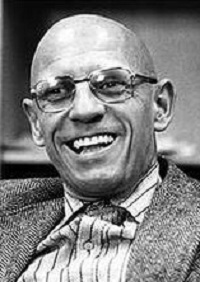 Michel Foucault
Michel Foucault
1926-1984
Michel Foucault, born Paul-Michel Foucault (October 15, 1926-June 25, 1984), was a French philosopher, social theorist and historian of ideas. He held a chair at the College de France with the title “History of Systems of Thought” and lectured at the University at Buffalo and the University of California, Berkeley.
Paul-Michel Foucault was born in Poitiers, France, to a notable provincial family. His father, Paul Foucault, was an eminent surgeon and hoped his son would join him in the profession. His early education was a mix of success and mediocrity until he attended the Jesuit College Saint-Stanislas, where he excelled. After World War II, Foucault was admitted to the prestigious Ecole Normale Superieure (rue d’Ulm).
Foucault is best known for his critical studies of social institutions, most notably psychiatry, medicine, the human sciences and the prison system, as well as for his work on the history of human sexuality. His writings on power, knowledge and discourse have been widely influential in academic circles. In the 1960s, Foucault was associated with structuralism, a movement from which he distanced himself. Foucault also rejected the poststructuralist and postmodernist labels later attributed to him, preferring to classify his thought as a critical history of modernity rooted in Immanuel Kant. Foucault’s project was particularly influenced by Nietzsche, his “genealogy of knowledge” being a direct allusion to Nietzsche’s “genealogy of morality.”
Foucault died of an AIDS-related illness in Paris on June 25, 1984.
Source: http://en.wikipedia.org/wiki/Michel_Foucault
 Bibliography
Bibliography
Press your browser’s BACK button to return to the previous page.
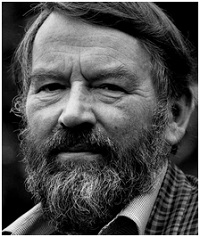 John Fowles
John Fowles
1926-2005
John Robert Fowles (March 31, 1926-November 5, 2005) was an English novelist and essayist. He was born in Leigh-on-Sea in Essex, England, the son of Gladys May Richards and Robert John Fowles. He attended Alleyn Court Preparatory School.
In 1939, Fowles won a position at Bedford School and was a student there until 1944. After leaving Bedford School in 1944, Fowles enrolled in a Naval Short Course at Edinburgh University. Fowles was prepared to receive a commission in the Royal Marines. In 1947, after completing his military service, Fowles entered New College, Oxford, where he studied both French and German, although he stopped studying German and concentrated on French for his B.A.
In late 1960, Fowles began working on The Collector. The book was published in 1963. The success of his novel meant that Fowles was able to stop teaching and devote himself full-time to a literary career. His second book was The Aristos, a nonfiction collection of philosophy. Afterward, he set about collating all the drafts he had written of what would become his most studied work, The Magus, based in part on his experiences in Greece. In 1965, Fowles left London, moving to a farm, Underhill, in Dorset, where the isolated farm house became the model for the dairy in the book Fowles was then writing, The French Lieutenant’s Woman (1969).
Fowles lived the rest of his life in Lyme Regis. His works, The Ebony Tower (1974), Daniel Martin (1977), Mantissa (1981) and A Maggot (1985), were all written from Belmont House.
Fowles died in Axminster Hospital on November 5, 2005.
Source: http://en.wikipedia.org/wiki/John_Fowles
 Bibliography
Bibliography
Press your browser’s BACK button to return to the previous page.
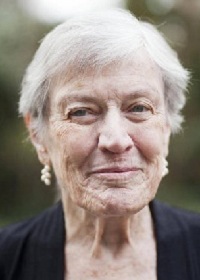 Paula Fox
Paula Fox
1923-2017
Paula Fox (April 22, 1923-March 1, 2017) was an American author of novels for adults and children and two memoirs. Her novel, The Slave Dancer (1973), received the Newbery Medal in 1974 and, in 1978, she was awarded the Hans Christian Andersen Medal. In 2008 her novel, A Portrait of Ivan, won the Deutscher Jugendliteraturpreis.
Her adult novels went out of print in 1992. In the mid-1990s she enjoyed a revival as her adult fiction was championed by a new generation of American writers.
Fox was born in New York, New York on April 22, 1923. Her father, Paul Hervey Fox, wrote screenplays and was often drunk. Her Cuban-born mother, Elsie De Sola Fox, rejected her at birth and left her in a foundling home in New York City. Her maternal grandmother, temporarily visiting the United States, rescued her. Unable at the time to provide a home herself, the Cuban abuela gave her to Reverend Elwood Corning (fondly called Uncle Elwood) and his bedridden mother in Balmville, New York. The Reverend treated her kindly, teaching her important things along the way. Fox first visited her parents’ house at the age of 3, where her mother treated her like a prisoner in war.
A teenage marriage produced a daughter, Linda, in 1944. However, given the tumultuous relationship with her own biological parents, she gave the child up for adoption. Fox later attended Columbia University, married the literary critic and translator Martin Greenberg, raised two sons, taught and began to write.
In 2011 she was inducted into the New York State Writers Hall of Fame. The Writers Hall of Fame is a project of the Empire State Center for the Book. She was championed by the author Jonathan Franzen, who saw that some of her books were re-issued.
Fox died at age 93 in Brooklyn on March 1, 2017.
Source: http://en.wikipedia.org/wiki/Paula_Fox
 Bibliography
Bibliography
Press your browser’s BACK button to return to the previous page.
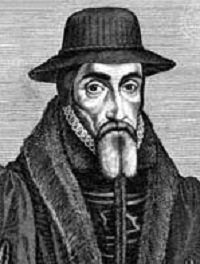 John Foxe
John Foxe
1516-1587
John Foxe, the author of the famous Book of Martyrs, was born at Boston, in Lincolnshire, in 1516. At the age of 16 he is said to have entered Brasenose College, Oxford. His authenticated connection at the university is, however, with Magdalen College. He took his B.A. degree in 1537 and his M.A. in 1543. He was lecturer on logic in 1540-1541. He wrote several Latin plays on Scriptural subjects, of which the best, De Christo triumphante, was repeatedly printed (1551).
He became a fellow of Magdalen College in 1539, resigning in 1545. It is said that he refused to conform to the rules for regular attendance at chapel, and that he protested both against the enforced celibacy of fellows and the obligation to take holy orders within seven years of their election.
On leaving Oxford, he acted as tutor for a short time in the house of the Lucys of Charlecote, near Stratford-on-Avon, where he married Agnes Randall. Late in 1547 or early in the next year, he went to London. He found a patron in Mary Fitzroy, Duchess of Richmond and, having been ordained deacon by Ridley in 1550, he settled at Reigate Castle, where he acted as tutor to the duchess’ nephews, the orphan children of Henry Howard, Earl of Surrey. On the accession of Queen Mary, Foxe was deprived of his tutorship by the boys’ grandfather, the Duke of Norfolk, who was now released from prison.
He retired to Strassburg and occupied himself with a Latin history of the Christian persecutions that he had begun at the suggestion of Lady Jane Grey. This book formed the first outline of The Actes and Monuments. It was printed by Wendelin Richelius with the title of Commentarii rerum in ecclesia gestarum (1554). In the year of its publication Foxe removed to Frankfort.
He moved to Basel in 1555, where he worked as printer’s reader to Johann Herbst or Oporinus. He made steady progress with his great book as he received reports from England of the religious persecutions there and he issued from the press of Oporinus his pamphlet, “Ad inclytos ac praepotentes Angliae proceres … supplicatio” (1557), a plea for toleration addressed to the English nobility. In 1559, he completed the Latin edition of his martyrology and returned to England.
Foxe was ordained priest by Edmund Grindal, bishop of London, in 1560 and, besides much literary work, he occasionally preached at Paul’s Cross and other places. His work had rendered great service to the government and he might have had high preferment in the Church but for the Puritan views he consistently maintained. He held, however, the prebend of Shipton in Salisbury cathedral and is said to have been for a short time rector of Cripplegate.
In 1563, his book was issued in England and its popularity was immense and signal. The Marian persecution was still fresh in men’s minds and the graphic narrative intensified in its numerous readers the fierce hatred of Spain and of the Inquisition that was one of the master passions of the reign.
He died on April 18, 1587 and was buried at St. Giles’, Cripplegate.
Source: http://www.luminarium.org/renlit/foxebio.htm
 Bibliography
Bibliography
Press your browser’s BACK button to return to the previous page.
 Robert Francis
Robert Francis
1901-1987
Robert Francis (August 12, 1901-July 13, 1987) was an American poet who lived most of his life in Amherst, Massachusetts.
Francis was born in Upland, Pennsylvania. He graduated from Harvard University in 1923. He would later attend the Graduate School of Education at Harvard, where he once said that he felt that he’d come home. He lived in a small house he built himself in 1940, which he called Fort Juniper. One of his poetic mentors was Robert Frost and, indeed, Francis’ first volume of poems, Stand Here with Me (1936), displays a poetic voice eerily reminiscent of Frost’s own.
In later volumes, Francis found a voice distinctively his own, relaxed in meter and characterized by puns, word-plays, slant rhymes and repetitions of key words. Aside from one long narrative poem in Frostian blank verse, Francis’ poetry consists largely of concise lyrics, somewhat limited in thematic range but intensely crafted and deeply personal. Frost would later say that Robert Francis was America’s best neglected poet. He often wrote about nature and baseball.
Francis died on July 13, 1987
Source: http://en.wikipedia.org/wiki/Robert_Francis_%28poet%29
 Bibliography
Bibliography
Press your browser’s BACK button to return to the previous page.
 Anne Frank
Anne Frank
1929-1945
Annelies Marie “Anne” Frank (June 12, 1929-early March 1945) was one of the most renowned and most discussed Jewish victims of the Holocaust. Acknowledged for the quality of her writing, her diary has become one of the world’s most widely read books and has been the basis for several plays and films.
Born in the city of Frankfurt am Main in Weimar Germany, she lived most of her life in or near Amsterdam, in the Netherlands. Born a German national, Frank lost her citizenship in 1941 when Nazi Germany passed the anti-Semitic Nuremberg Laws. She gained international fame posthumously after her diary was published. It documents her experiences hiding during the German occupation of the Netherlands in World War II.
The Frank family moved from Germany to Amsterdam in 1933, the year the Nazis gained control over Germany. By the beginning of 1940, they were trapped in Amsterdam by the Nazi occupation of the Netherlands. As persecutions of the Jewish population increased in July 1942, the family went into hiding in the hidden rooms of Anne’s father, Otto Frank’s, office building. After two years, the group was betrayed and transported to concentration camps. Anne Frank and her sister, Margot, were eventually transferred to the Bergen-Belsen concentration camp, where they both died of typhus in March 1945.
Otto Frank, the only survivor of the family, returned to Amsterdam after the war to find that Anne’s diary had been saved and his efforts led to its publication in 1947. It was translated from its original Dutch and first published in English in 1952 as The Diary of a Young Girl. It has since been translated into many languages. The diary, which was given to Anne on her 13th birthday, chronicles her life from June 12, 1942 until August 1, 1944.
Source: http://en.wikipedia.org/wiki/Anne_Frank
 Bibliography
Bibliography
Press your browser’s BACK button to return to the previous page.
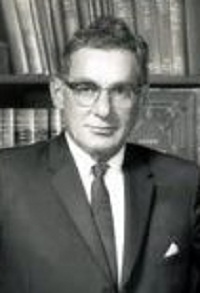 Pat Frank
Pat Frank
1907-1964
Pat Frank (May 5, 1907-October 12, 1964) is the pen name of the American writer, newspaperman and government consultant, Harry Hart Frank.
Frank was born in Chicago in 1907. He spent many years as a journalist and information handler for several newspapers, agencies and government bureaus. During his early career, he lived mainly in New York and Washington and served overseas during World War II, when he worked for the Office of War Information and was a correspondent in Italy, Austria, Germany and Turkey.
Nearly all men are sterile in Mr. Adam (1946), Frank’s first published work. His other novels include Hold Back the Night, An Affair of State and Forbidden Area. Frank’s experiences reporting on the Korean War are described in his autobiographical travelogue, The Long Way Round, and influenced Hold Back the Night.
Frank wrote his most popular work, the post-apocalyptic novel, Alas, Babylon, while living in Tangerine, Florida, on Lake Beauclaire near Mount Dora. Vivian Owens, an author familiar with local history, states that “Pistolville,” the name Frank gave to an area near Fort Repose in the novel, was in fact a location situated just between the southern edge of Mount Dora to its north and Tangerine to its south. According to Owens, greater Mount Dora was intended by Frank to be the model for his semi-fictional Fort Repose. Frank also authored a 160-page nonfiction book, How to Survive the H Bomb and Why (1962). His short story, “The Girl Who Almost Got Away,” was the basis for the Howard Hawks’ movie, Man’s Favorite Sport.
Frank received the American Heritage Foundation Award in 1961. He died on October 12, 1964, in Jacksonville, Florida, age 57, of acute pancreatitis.
Source: http://en.wikipedia.org/wiki/Pat_Frank
 Bibliography
Bibliography
Press your browser’s BACK button to return to the previous page.
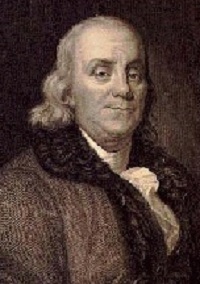 Benjamin Franklin
Benjamin Franklin
1706-1790
Benjamin Franklin, born in Boston, Massachusetts, on January 17, 1706, may by his life alone be the most profound statement of what an American strives to be.
With no formal education beyond the age of 10 years, Franklin was celebrated throughout Europe, welcomed in any Royal Court and sought out by every prestigious society. Indeed, when the reputations of George Washington and Thomas Jefferson had yet to be sorted out, Franklin was worshipped wherever his name was known.
He attended grammar school at age eight but was put to work at 10. He apprenticed as a printer to his brother James, who printed The New England Courant, at age 12, and published his first article there, anonymously, in 1721. Franklin was an avid reader, inquisitive and skeptical. Through his satirical articles, he poked fun at the people of Boston and soon wore out his welcome, both with his brother and with the city. He ran away to New York and then on to Philadelphia at the age of 16, looking for work as a printer. He managed a commission to Europe for the purpose of buying supplies to establish a new printing house in Philadelphia, but found himself abandoned when he stepped off ship.
Through hard work and frugality he bought his fare back to Philadelphia in 1732 and set up shop as a printer. He was appointed clerk of the Pennsylvania Assembly in 1736 and as Postmaster the following year. In 1741, he began publishing Poor Richard’s Almanac, a very popular and influential magazine.
He was elected to the Pennsylvania Assembly in 1751 and served as an agent for Pennsylvania (and ultimately for three other colonies) to England, France and several other European powers. He was elected to the Continental Congress in 1775, where he played a crucial role in the rebellion against Great Britain, including service to Jefferson in editing the Declaration of Independence.
Franklin, who was by this time independently wealthy and retired from publishing, continued to serve an important role in government both local and national. He was the United States’ first Postmaster General, Minister to the French Court, Treaty agent and signer to the peace with Great Britain and celebrated member of the Constitutional Convention.
Franklin was one of the earliest and strongest advocates for the abolition of slavery and for the protection of the rights of American aboriginal peoples.
He died on April 17, in 1790, one of the most celebrated characters in America.
Source: http://www.ushistory.org/declaration/signers/franklin.htm
 Bibliography
Bibliography
Press your browser’s BACK button to return to the previous page.
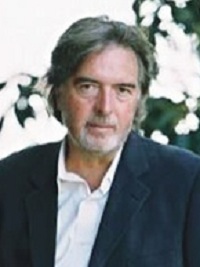 Charles Frazier
Charles Frazier
1950-
Charles Frazier (born November 4, 1950) is an award-winning American historical novelist.
Frazier was born in Asheville, North Carolina, and graduated from the University of North Carolina in 1973. He earned an M.A. from Appalachian State University in the mid-1970s, and received his Ph.D in English from the University of South Carolina in 1986. He currently raises horses on a farm near Raleigh, North Carolina, where he lives with his wife, Catherine, who teaches accounting, and their daughter, Annie.
His first novel, Cold Mountain, traces the journey of Inman, a wounded deserter from the Confederate army near the end of the American Civil War. Frazier’s second novel, Thirteen Moons, published in 2006, traces the story of one man across a century of change in America.
Frazier’s next book, Nightwoods, takes place in the 20th century, although the setting is still the Appalachian Mountains.
Source: http://en.wikipedia.org/wiki/Charles_Frazier
 Bibliography
Bibliography
Press your browser’s BACK button to return to the previous page.
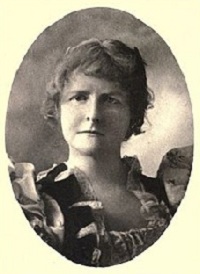 Mary E. Wilkins Freeman
Mary E. Wilkins Freeman
1852-1930
Mary Eleanor Wilkins Freeman (October 31, 1852-March 13, 1930) was a prominent 19th century American author.
She was born in Randolph, Massachusetts, and attended Mount Holyoke College (then, Mount Holyoke Female Seminary) in South Hadley, Massachusetts, for one year, from 1870-71. Freeman’s parents were orthodox Congregationalists, causing her to have a very strict childhood. Religious constraints play a key role in some of her works. She later finished her education at West Brattleboro Seminary. She passed the greater part of her life in Massachusetts and Vermont.
Freeman began writing stories and verse for children while still a teenager to help support her family and was quickly successful. Her best-known work was written in the 1880s and 1890s while she lived in Randolph. She produced more than two dozen volumes of published short stories and novels. She is best known for two collections of stories, A Humble Romance and Other Stories (1887) and A New England Nun and Other Stories (1891). Her stories deal mostly with New England life and are among the best of their kind. Freeman is also remembered for her novel, Pembroke (1894), and she contributed a notable chapter to the collaborative novel, The Whole Family (1908). In 1902, she married Dr. Charles M. Freeman of Metuchen, New Jersey.
In April 1926, Freeman became the first recipient of the William Dean Howells Medal for Distinction in Fiction from the American Academy of Arts and Letters. She died in Metuchen and was interred in Hillside Cemetery in Scotch Plains, New Jersey.
Source: http://en.wikipedia.org/wiki/Mary_Eleanor_Wilkins_Freeman
 Bibliography
Bibliography
Press your browser’s BACK button to return to the previous page.
 Philip Morin Freneau
Philip Morin Freneau
1752-1832
Philip Morin Freneau (January 2, 1752-December 18, 1832) was a notable American poet, nationalist, polemicist, sea captain and newspaper editor sometimes called the “Poet of the American Revolution.”
Freneau was born in New York City, the oldest of the five children of Huguenot wine merchant Pierre Fresneau and his Scottish wife. Philip was raised in Monmouth County, New Jersey, where he studied under William Tennent Jr. His father died in 1767 and Freneau entered the College of New Jersey, now Princeton University, as a sophomore in 1768 to study for the ministry.
Following his graduation from Princeton, Freneau tried his hand at teaching but quickly gave it up. He also pursued a further study of theology, but gave this up as well after about two years. As the Revolutionary War approached in 1775, Freneau wrote a number of anti-British pieces. However, by 1776, Freneau left America for the West Indies, where he would spend time writing about the beauty of nature. In 1778, Freneau returned to America and rejoined the patriotic cause. Freneau eventually became a crew member on a revolutionary privateer and was captured in this capacity. He was held on a British prison ship for about six weeks. This unpleasant experience (in which he almost died), detailed in his work, “The British Prison Ship,” would precipitate many more patriotic and anti-British writings throughout the revolution and after. For this, he was named, “The Poet of the American Revolution.”
In 1790, Freneau married and became an assistant editor of The New York Daily Advertiser. Soon after, James Madison and Thomas Jefferson worked to get Freneau to move to Philadelphia in order to edit a partisan newspaper that would counter the Federalist newspaper, The Gazette of the United States. Jefferson, then head of the State Department, offered Freneau a position in Philadelphia as a State Department translator. Freneau accepted this undemanding position, which allowed him enough free time to head up the Democratic-Republican newspaper Jefferson and Madison envisioned.
Freneau later retired to a more rural life and wrote a mix of political and nature works. Freneau died at 80 years old, frozen to death when trying to get back to his home.
Source: http://en.wikipedia.org/wiki/Philip_Morin_Freneau
 Bibliography
Bibliography
Press your browser’s BACK button to return to the previous page.
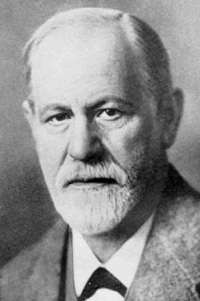 Sigmund Freud
Sigmund Freud
1856-1938
Sigmund Freud (May 6, 1856-September 23, 1939) was an Austrian neurologist who founded the discipline of psychoanalysis. Freud’s family and ancestry were Jewish and Freud always considered himself a Jew, although he rejected Judaism and had a critical view of religion. Freud’s parents were poor but ensured his education. He was an outstanding pupil in high school and graduated the Matura with honors in 1873. Interested in philosophy as a student, Freud later turned away from it and became a neurological researcher into cerebral palsy, aphasia and microscopic neuroanatomy.
Freud went on to develop theories about the unconscious mind and the mechanism of repression. He established the field of verbal psychotherapy by creating psychoanalysis, a clinical method for treating psychopathology through dialogue between a patient (or “analysand”) and a psychoanalyst. Freud postulated the existence of libido, developed therapeutic techniques such as the use of free association, discovered the transference and established its central role in the analytic process, and proposed that dreams help to preserve sleep by representing as fulfilled wishes that would otherwise awake the dreamer. He was also a prolific essayist, drawing on psychoanalysis to contribute to the interpretation and critique of culture.
Freud, who was suffering from cancer and in severe pain, died on September 23, 1939.
Source: http://en.wikipedia.org/wiki/Sigmund_Freud
 Bibliography
Bibliography
Press your browser’s BACK button to return to the previous page.
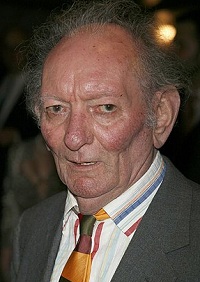 Brian Friel
Brian Friel
1929-2015
Brian Friel (January 9, 1929-October 2, 2015) was an Irish dramatist, author and director of the Field Day Theatre Company. Friel was best known for plays such as Philadelphia, Here I Come! and Dancing at Lughnasa, but he wrote more than 30 plays in a six-decade career that saw him elected Saoi of Aosdana.
In 1980, Friel co-founded Field Day Theatre Company and his play, Translations, was the company’s first production.
Dancing at Lughnasa brought Friel great acclaim internationally, winning him several Tony Awards. His play, Lovers, was adapted into an opera by Richard Wargo, entitled Ballymore (1999), which was premiered by the Skylight Opera Theatre, Milwaukee, in February 1999.
Friel was a member of the American Academy of Arts and Letters, the British Royal Society of Literature and the Irish Academy of Letters.
After a long illness, Friel died at the age of 86 in the early morning of Friday, October 2, 2015 in Greencastle, County Donegal.
Source: http://en.wikipedia.org/wiki/Brian_Friel
 Bibliography
Bibliography
Press your browser’s BACK button to return to the previous page.
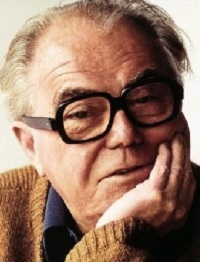 Max Frisch
Max Frisch
1911-1991
Max Rudolf Frisch (May 15, 1911-April 4, 1991) was a Swiss playwright and novelist, regarded as highly representative of German-language literature after World War II. In his creative works, Frisch paid particular attention to issues relating to problems of human identity, individuality, responsibility, morality and political commitment. His use of irony is a significant feature of his post-war publications. Frisch was a member of the Gruppe Olten.
Frisch was born in 1911 in Zurich, the son of Franz Bruno Frisch (an architect) and Karolina Bettina Frisch (nee Wildermuth). After studying at the Realgymnasium in Zurich, he enrolled at the University of Zurich in 1930 but had to abandon his studies in German literature owing to financial problems caused by the death of his father in 1932. Instead, he started working as a journalist and columnist for the Neue Zurcher Zeitung (NZZ), one of the major newspapers in Switzerland. With the NZZ, he would entertain a lifelong ambivalent love-hate relationship, for his own views were in stark contrast to the conservative views promulgated by this newspaper. In 1933, he travelled through eastern and southeastern Europe and, in 1935, he visited Germany for the first time.
From 1936 to 1941, he studied architecture at the ETH Zurich. His first and still best-known project was in 1942, when he won the invitation of tenders for the construction of a public swimming pool right in the middle of Zurich (the Letzigraben).
In 1951, he was awarded a grant by the Rockefeller Foundation and spent one year in the United States. After 1955, he worked exclusively as a freelance writer. His experience of post-war Europe is vividly described in his diary for 1946-1949; it contains the first drafts of later fictional works.
During the 1950s and 1960s, Frisch wrote several novels that explored problems of alienation and identity in modern societies. These are: I’m Not Stiller (1954), Homo Faber (1957) and Wilderness of Mirrors/Gantenbein (1964). In addition, he wrote political dramas, such as Andorra and The Fire Raisers. He continued to publish extracts from his diaries. These included fragments from contemporary media reports and paradoxical questionnaires, as well as personal reflections and reportage.
Max Frisch died of cancer on April 4, 1991 in Zurich.
Source: http://en.wikipedia.org/wiki/Max_Frisch
 Bibliography
Bibliography
Press your browser’s BACK button to return to the previous page.
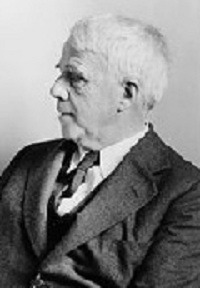 Robert Frost
Robert Frost
1874-1963
Robert Lee Frost (March 26, 1874-January 29, 1963) was an American poet. He is highly regarded for his realistic depictions of rural life and his command of American colloquial speech. His work frequently employed settings from rural life in New England in the early 20th century, using them to examine complex social and philosophical themes. A popular and often-quoted poet, Frost was honored frequently during his lifetime, receiving four Pulitzer Prizes for Poetry.
Frost was born in San Francisco, California, to journalist William Prescott Frost Jr., and Isabelle Moodie. His father was a teacher and later an editor of The San Francisco Evening Bulletin and an unsuccessful candidate for city tax collector. After his death on May 5, 1885, the family moved across the country to Lawrence, Massachusetts, under the patronage of Robert’s grandfather, William Frost Sr., who was an overseer at a New England mill. Frost graduated from Lawrence High School in 1892.
Although known for his later association with rural life, Frost grew up in the city and published his first poem in his high school’s magazine. He attended Dartmouth College for two months, long enough to be accepted into the Theta Delta Chi fraternity. Frost returned home to teach and to work at various jobs – including helping his mother teach her class of unruly boys, delivering newspapers and working in a factory as an arclight carbon filament changer. He did not enjoy these jobs, feeling his true calling was poetry.
In 1894, he sold his first poem, “My Butterfly. An Elegy,” for $15 – equivalent in spending power to at least $300 today. He married Elinor Miriam White at Lawrence, Massachusetts, on December 19, 1895. Shortly before dying, Robert’s grandfather purchased a farm for Robert and Elinor in Derry, New Hampshire; Frost worked the farm for nine years, while writing early in the mornings and producing many of the poems that would later become famous. Ultimately, his farming proved unsuccessful and he returned to the field of education as an English teacher at New Hampshire’s Pinkerton Academy from 1906 to 1911, then at the New Hampshire Normal School (now Plymouth State University) in Plymouth, New Hampshire.
In 1912, Frost sailed with his family to Great Britain, settling first in Beaconsfield, a small town outside London. His first book of poetry, A Boy’s Will, was published the next year. As World War I began, Frost returned to America in 1915 and bought a farm in Franconia, New Hampshire, where he launched a career of writing, teaching and lecturing. This family homestead served as the Frosts’ summer home until 1938.
In 1924, he won the first of four Pulitzer Prizes for the book, New Hampshire: A Poem with Notes and Grace Notes. He would win additional Pulitzers for Collected Poems in 1931, A Further Range in 1937 and A Witness Tree in 1943.
Frost was 86 when he performed a reading of his well-known poem, “The Gift Outright,” at the inauguration of President John F. Kennedy on January 20, 1961. He died in Boston two years later, on January 29, 1963, of complications from prostate surgery. He was buried at the Old Bennington Cemetery in Bennington, Vermont.
Source: http://en.wikipedia.org/wiki/Robert_Frost
 Bibliography
Bibliography
Press your browser’s BACK button to return to the previous page.
 Athol Fugard
Athol Fugard
1932-
Athol Fugard (born June 11, 1932) is a South African playwright, novelist, actor and director who writes in English, best known for his political plays opposing the South African system of apartheid and for the 2005 Academy Award-winning film of his novel, Tsotsi.
Athol Fugard was born as Harold Athol Lanigan Fugard, in Middelburg, Eastern Cape, South Africa, on June 11, 1932, to Irish and Afrikaner parents; his mother, Elizabeth Magdalena (nee Potgieter), an Afrikaner, operated first a general store and then a lodging house; his father, Harold, was a disabled former jazz pianist of Irish, English and French Huguenot descent. In 1935, his family moved to Port Elizabeth. In 1938, he began attending primary school at Marist Brothers College, a private Catholic school; after being awarded a scholarship, he enrolled at a local technical college for secondary education and then studied Philosophy and Social Anthropology at the University of Cape Town, but he dropped out of the university in 1953, a few months before final examinations. He left home, hitchhiked to North Africa with a friend and then spent the next two years working in east Asia on a steamer ship, the SS Graigaur, where he began writing, an experience “celebrated” in his 1999 autobiographical play, The Captain’s Tiger: A Memoir for the Stage.
Fugard moved to Johannesburg in 1958, where he worked as a clerk in a Native Commissioners’ Court, which “made him keenly aware of the injustices of apartheid.” The political impetus of Fugard’s plays brought him into conflict with the national government; to avoid prosecution, he had his plays produced and published outside South Africa. A former alcoholic, Athol Fugard has been teetotal since the early 1980s.
He and his wife live in San Diego, California, where he teaches as an adjunct professor of playwriting, acting and directing in the Department of Theatre and Dance at the University of California, San Diego (UCSD), and maintain a residence in South Africa.
Source: http://en.wikipedia.org/wiki/Athol_Fugard
 Bibliography
Bibliography
Press your browser’s BACK button to return to the previous page.
 Charles Fuller
Charles Fuller
1939-2022
Charles H. Fuller Jr. (born March 5, 1939) is an American playwright, best known for his play, A Soldier’s Play, for which he received the 1982 Pulitzer Prize for Drama.
Fuller was born in Philadelphia, Pennsylvania in 1939, the son of Charles H. Fuller Sr. and Lillian Anderson. He attended Roman Catholic High School and then Villanova University (1956-1958), then joined the U.S. Army in 1959, serving in Japan and South Korea. He left the Army in 1962 and later studied at La Salle University (1965-1967), earning a DFA. He co-founded the Afro-American Arts Theatre in Philadelphia in 1967, co-directing it until 1971. He later moved to New York City. He now lives in Philadelphia.
Fuller vowed to become a writer after noticing that his high school’s library had no books by African-American authors. He achieved critical notice in 1969 with The Village: A Party, a drama about racial tensions between a group of mixed-race couples. He later wrote plays for the Henry Street Settlement theatre and the Negro Ensemble Company in New York, which have performed several of his plays. His 1975 play, The Brownsville Raid, is based on the Brownsville Affair, an altercation between black soldiers and white civilians in Brownsville, Texas, in 1906, which led to an entire black regiment being dishonorably discharged, though later pardoned, in 1976.
He won an Obie Award for Zooman and the Sign in 1980. His next work, A Soldier’s Play, won Fuller a Pulitzer Prize in 1982.
Fuller has received grants from the Rockefeller Foundation, Guggenheim Foundation, State of New York and the National Endowment for the Arts. He has also written short fiction and screenplays and worked as a movie producer. In 2010, he published his first novel, Snatch: The Adventures of David and Me, a work of children’s fiction written for his two sons.
He died of natural causes in Toronto on October 3, 2022, aged 83.
Source: http://en.wikipedia.org/wiki/Charles_Fuller
 Bibliography
Bibliography
Press your browser’s BACK button to return to the previous page.
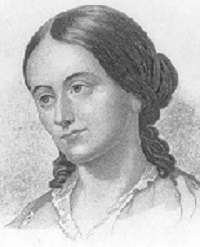 Margaret Fuller
Margaret Fuller
1810-1850
Feminist, writer and literary critic, Margaret Fuller was born May 23, 1810 in Cambridgeport, Massachusetts. Her father, Timothy Fuller, was a prominent Massachusetts lawyer-politician who, disappointed that his child was not a boy, educated her rigorously in the classical curriculum of the day. Not until age 14 did she attend school (1824-26) and then returned to Cambridge and her course of reading. Her intellectual precociousness gained her the acquaintance of various Cambridge intellectuals, but her assertive and intense manner put many people off. Her father moved the family to a farm in Groton, Massachusetts, in 1833, and she found herself isolated and forced to help educate her siblings and run the household for her ailing mother.
After visiting Ralph Waldo Emerson in Concord, Fuller taught for Bronson Alcott in Boston from 1836 to 1837, and then at a school in Providence, Rhode Island. During this time she continued to enlarge both her intellectual accomplishments and personal acquaintances. Moving to Jamaica Plain, a suburb of Boston, in 1840, she conducted her famous “Conversations,” discussion groups that attracted many prominent people from all around Boston. from 1840 to 1844.
Fuller also joined Ralph Waldo Emerson and others to found The Dial, a journal devoted to Transcendentalist views in 1840. She became a contributor from the first issue and its editor. Her first book, based on a trip through the Midwest, was Summer on the Lakes (1844) and this led to an invitation by Horace Greeley to be literary critic at The New York Tribune that same year. She published her feminist classic, Woman in the Nineteenth Century, in 1845. In addition to writing a solid body of critical reviews and essays, she became active in various social reform movements. In 1846, she went to Europe as a foreign correspondent for The Tribune; in England and France she was regarded as a serious intellectual and met many prominent people.
Traveling to Italy in 1847, Margaret Fuller met Giovanni Angelo, the Marchese d’Ossoli, 10 years younger and of liberal principles. They became lovers, had a son in 1848 and married the next year. Involved in the Roman revolution of 1848, Fuller and her husband fled to Florence in 1849. They sailed for the United States but the ship ran aground in a storm off Fire Island, New York, and their bodies were never found.
Source: http://www.biography.com/people/margaret-fuller-9303889
 Bibliography
Bibliography
Press your browser’s BACK button to return to the previous page.
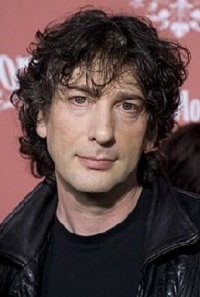 Neil Gaiman
Neil Gaiman
1960-
Neil Richard Gaiman (born November 10, 1960) is an English author of short fiction, novels, comic books, graphic novels, audio theatre and films. His notable works include the comic book series, The Sandman, and novels: Stardust, American Gods, Coraline and The Graveyard Book. Gaiman’s writing has won numerous awards, including Hugo, Nebula and Bram Stoker, as well as the 2009 Newbery Medal and 2010 Carnegie Medal in Literature. He is the first author to win both the Newbery and the Carnegie medals for the same work.
Gaiman’s family is of Polish and other Eastern European Jewish origins; his great-grandfather emigrated from Antwerp before 1914 and his grandfather eventually settled in the Hampshire city of Portsmouth and established a chain of grocery stores. His father, David Bernard Gaiman, worked in the same chain of stores; his mother, Sheila Gaiman (nee Goldman), was a pharmacist.
Gaiman was educated at several Church of England schools, including Fonthill School in East Grinstead, Ardingly College (1970-74) and Whitgift School in Croydon (1974-77). He met his first wife, Mary McGrath, while she was studying and living in a house in East Grinstead that was owned by his father. The couple were married in 1985 after having their first child, Michael.
In the early 1980s, Gaiman pursued journalism, conducting interviews and writing book reviews as a means to learn about the world and to make connections that he hoped would later assist him in getting published. He wrote and reviewed extensively for the British Fantasy Society. His first professional short story publication was “Featherquest,” a fantasy story, in Imagine Magazine in May 1984, when he was 24.
In 1984, he wrote his first book, a biography of the band, Duran Duran, as well as Ghastly Beyond Belief, a book of quotations, with Kim Newman. He also wrote interviews and articles for many British magazines, including Knave. In the late 1980s, he wrote Don’t Panic: The Official Hitchhiker’s Guide to the Galaxy Companion in what he calls a “classic English humor” style. Following on from that he wrote the opening of what would become his collaboration with Terry Pratchett on the comic novel, Good Omens, about the impending apocalypse.
Source: http://en.wikipedia.org/wiki/Neil_Gaiman
 Bibliography
Bibliography
Press your browser’s BACK button to return to the previous page.
 Ernest Gaines
Ernest Gaines
1933-2019
Ernest James Gaines (January 15, 1933-November 5, 2019) was an African-American author. His works have been taught in college classrooms and translated into many languages, including French, Spanish, German, Russian and Chinese. Four of his works have been made into television movies.
His 1993 novel, A Lesson before Dying, won the National Book Critics Circle Award for fiction. Gaines was a MacArthur Foundation fellow, awarded the National Humanities Medal and inducted into the French Ordre des Arts et des Lettres (Order of Arts and Letters) as a Chevalier.
Gaines was among the fifth generation of his sharecropper family to be born on the plantation in Pointe Coupee Parish, Louisiana. This became the setting and premise for many of his later works. He was the oldest of 12 children, raised by his aunt, who was crippled and had to crawl to get around the house. Although born generations after the end of slavery, Gaines grew up impoverished, living in old slave quarters on the plantation.
Gaines’ first years of school took place in the plantation church. When the children were not picking cotton in the fields, a visiting teacher came for five to six months of the year to provide basic education. Gaines then spent three years at St. Augustine School, a Catholic school for African-Americans in New Roads. Pointe Coupee Parish schooling for African-American children did not continue beyond the eighth grade during this time.
When he was 15, Gaines moved to Vallejo, California, to join his mother and stepfather, who had left Louisiana during World War II. His first novel was written at age 17, while babysitting his youngest brother, Michael. According to one account, he wrapped it in brown paper, tied it with string and sent it to a New York publisher, who rejected it. Gaines burned the manuscript, but later rewrote it to become his first published novel, Catherine Carmier.
In 1956, Gaines published his first short story, “The Turtles,” in a college magazine at San Francisco State University (SFSU). He earned a degree in literature in 1957 from SFSU. After spending two years in the Army, he won a writing fellowship to Stanford University.
Since 1984, Gaines spent the first half of every year in San Francisco and the second half in Lafayette, where he taught a creative writing workshop every autumn at the University of Louisiana at Lafayette.
In 1996, Gaines spent a full semester as a visiting professor at the University of Rennes in France, where he taught the first Creative Writing class ever offered in the French University system.
In the final years of his life, Gaines lived on Louisiana Highway 1 in Oscar, Louisiana, where he and his wife built a home on part of the old plantation where he grew up. He had the building where he attended church and school moved to his property.
Gaines died from natural causes at his home on November 5, 2019. He was 86 years old.
Source: http://en.wikipedia.org/wiki/Ernest_J._Gaines
 Bibliography
Bibliography
Press your browser’s BACK button to return to the previous page.
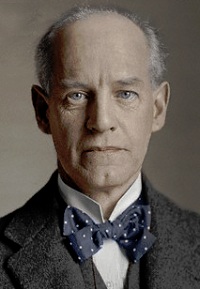 John Galsworthy
John Galsworthy
1867-1933
John Galsworthy, the son of a wealthy solicitor, was born at Kingston Hill in Surrey on August 14, 1867. Educated at Harrow and New College, Oxford, Galsworthy was called to the bar in 1890 but instead decided to become a writer.
Galsworthy’s first collection of short stories, From the Four Winds, was published in 1897. This was followed by the novel, The Island Pharisees (1904). These books sold poorly and Galsworthy later pointed out that for “11 years, I made not one penny out of what I, but practically no others, counted as my profession.”
Galsworthy’s first real success was the play, The Silver Box (1906). Later that year, his novel, The Man of Property, the first of his celebrated Forsyte Saga series, was published.
Galsworthy held progressive views and supported prison reform, votes for women and opposed censorship. His plays Strife (1909) and Justice (1910) dealt with the themes of poverty, class and injustice.
On the outbreak of World War I, Galsworthy was 47 years old. Too old to fight, he worked in France at the Benevole Hospital for disabled soldiers. He also signed over his family house as a rest home for members of the British army recovering from war injuries.
Galsworthy was also recruited by Charles Masterman, the head of the War Propaganda Bureau (WPB), to write material on behalf of the British government. This included articles in The New York Times, The New York Tribune, Scribner’s Magazine and The Literary Digest. Unlike some of those recruited by the WPB, Galsworthy refused to encourage the public to hate the enemy. He instead concentrated on the need to give support to disabled and wounded soldiers. Galsworthy’s collected articles for the WPB were published in A Sheaf (1916) and Another Sheaf (1917).
After the war, Galsworthy completed the Forsyte Saga with In Chancery (1920) and To Let (1921). The second part of the Forsyte chronicles was made up of The White Monkey (1924), The Silver Spoon (1926) and Swan Song (1928). Galsworthy was now a highly successful author and he was able to purchase a 15-room mansion at Bury in Sussex.
John Galsworthy, who received the Nobel Prize for Literature in 1932, died from a brain tumor on January 30, 1933.
Source: http://www.spartacus.schoolnet.co.uk/Jgalsworthy.htm